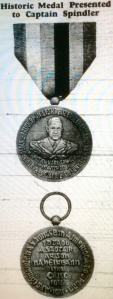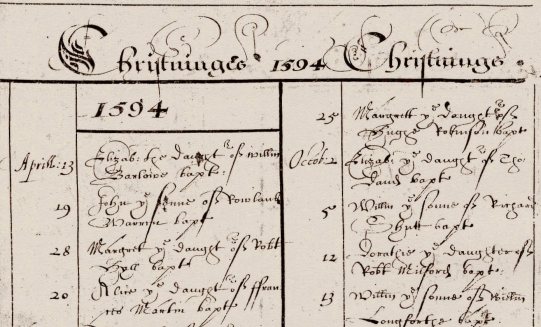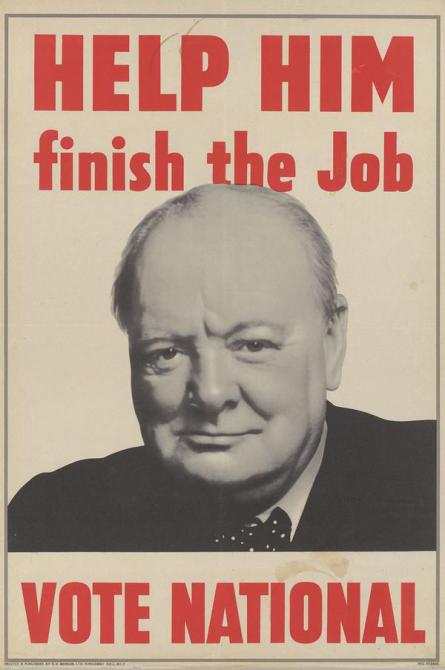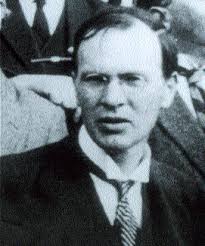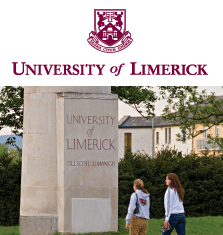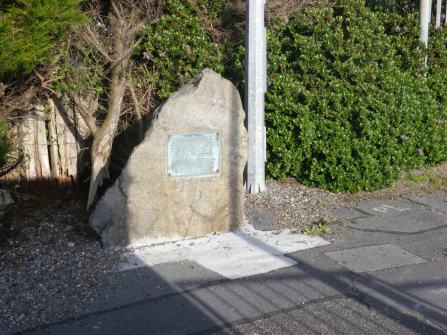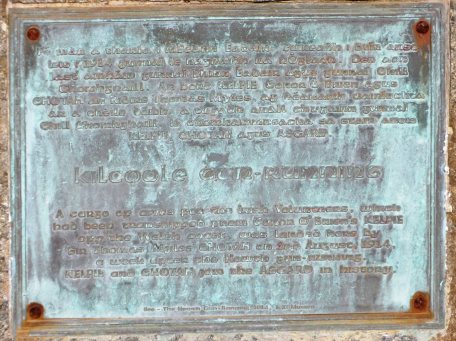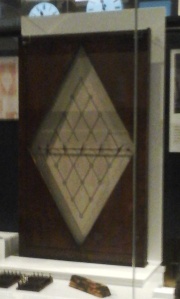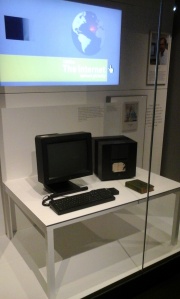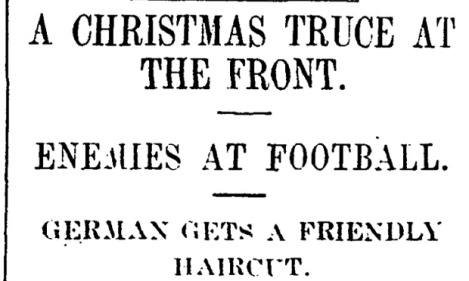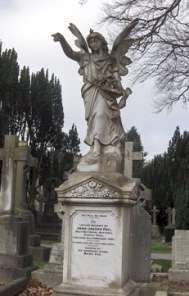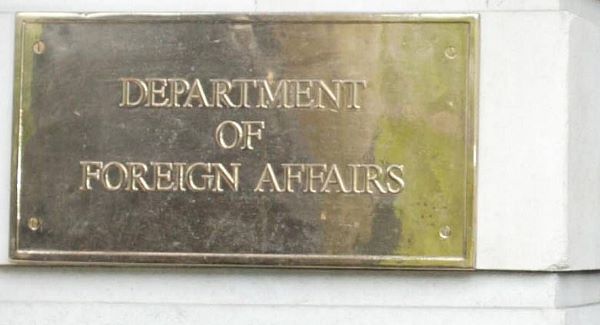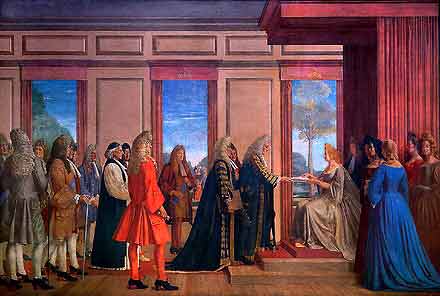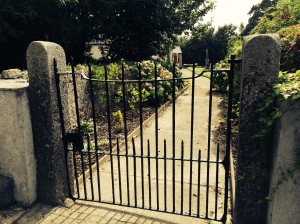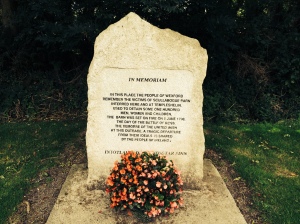Clare Hollingworth, war reporting and witnessing history
By Ciarán McCabe
Being an eye-witness to historic events is a rare thing for most people. But war correspondents frequently find themselves eye-witnesses to events of international significance, to the ‘first draft of history’. This is owing to the nature of the job. War correspondents – ever since William Howard Russell in the 1850s – have tended to travel from one sphere of conflict to another and have been, inevitably, well placed to witness battles, retreats, genocide and famines.
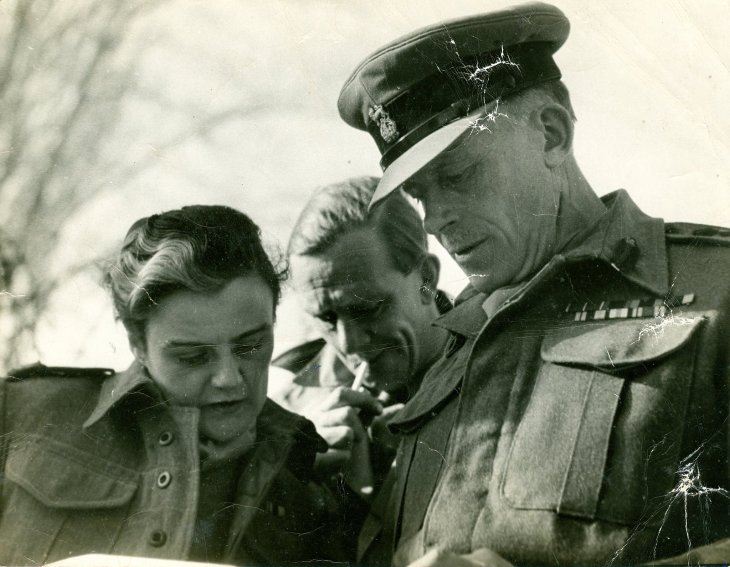
Among the most prolific, well-travelled and influential correspondents of the past century was Clare Hollingworth, who died in January 2017 aged 105 years. Her career was one of numerous exclusives of international significance, including perhaps the ‘scoop of the century’ when she reported on German mobilisation towards the Polish border in late-August 1939. Posted in Katowice as the Daily Telegraph’s war correspondent, Hollingworth borrowed a diplomatic vehicle to cross over into Germany to buy essentials, such as aspirin and wine, in the knowledge that a war was imminent. Driving back through the border, a hessian partition which had been erected along the roadside was blown open by a gust of wind, revealing (in the journalist’s own words) “scores, if not hundreds of tanks” in the valley below. Four days into her first posting as a war correspondent, Hollingworth had just landed the ‘scoop of the century’: the outbreak of World War II. Her published article of 29 August 1939 was headed: ‘1,000 tanks massed on Polish frontier. Ten Divisions reported ready for swift stroke’. (Thirty years later, she secured another world exclusive, in reporting for the Daily Telegraph on the commencement of secret negotiations to end the Vietnam War, an initiative latter scuppered through the cloak-and-dagger intervention of Richard Nixon).

(Image: Clare Hollingworth’s ‘scoop of the century’ (Daily Telegraph, 29 Aug. 1939))
Later in the war, Hollingworth reported from the North African front, regularly from behind enemy lines. Throughout her career her reporting was bolstered by her skill at developing contacts and networks of confidantes: she was well connected to the left-wing Front de Libération Nationale in Algeria, and in 1941 secured the first interview with the Shah of Iran, who, after his fall in 1979, would only speak to her. Hollingworth’s contacts also aided her in identifying and ‘outing’ the Soviet spy, ‘Kim’ Philby, a prominent war and foreign correspondent who defected to the USSR. (Incidentally, Hollingworth’s death came just four weeks after that of Philip Knightley, who was a member of the Sunday Times ‘Insight’ team that investigated Philby’s defection and who also wrote The First Casualty, the multi-edition survey work of the history of war reporting from the Crimean War to the recent Iraq War).
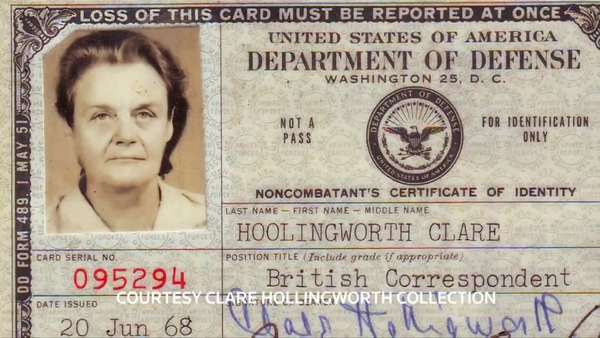
Among the wars Hollingworth reported on first-hand were World War II (1939-45), the French-Algerian War (1954-62), the India-Pakistan War (1965) and Vietnam (1960s), as well as from Maoist China. When the King David Hotel in British Mandate Jerusalem was attacked in 1946 by Irgun, the Zionist terrorist organisation, killing just less than 100 people, mostly British Mandate officials, Hollingworth was on the scene within minutes, having shortly beforehand parked her car around the corner; in 1989 she witnessed the Tiananmen Square massacre from a hotel balcony.
Among the interesting aspects of Hollingworth’s career is her sex. The fact is that the archetypal war reporter is a man – a fact demonstrated in war reporter John Burrowes’s dedication to his 1984 memoirs: ‘To reporters everywhere – and the women who have to suffer them’. Yet, despite the predominance of men among this profession notable women are to be found among the ranks of war correspondents, notable not for their relative novelty (for being women in a heavily gendered profession) but for their innovative reporting of conflict: Irish native Kathleen ‘Kit’ Blake Coleman, Virginia Cowles, Martha Gellhorn, and, right through to Marie Colvin, who was killed in Syria in 2012. In his illuminating The War Correspondent (2nd ed., 2016), Greg McLaughlin considers various commentators’ views on the significance of rising numbers of women correspondents in recent decades: some see this phenomenon as encouraging ‘a less gung-ho, more human-oriented sensibility’ to reporting, while for others, women reporters are more likely to cover unfashionable stories (the example of the East Timor crisis in 1999 is cited by McLaughlin), in contrast to their male counterparts, who are more likely to be career-driven and to throw themselves into headline-grabbing conflict reporting.
In noting the role of women as correspondents in conflict zones, it is interesting that just last month, the magazine Military Review (an official publication of the US armed forces) published a poignant photograph taken by US Army camerawoman Specialist Hilda Clayton, of the moment she was killed by an accidental mortar explosion during a training exercise in Laghman province, Afghanistan on 2 July 2013. In explaining the publication of the photograph, the magazine was eager to assert that women photographers (in this case, soldier correspondents) were as much a part of the conflict zone as their male colleagues: ‘Not only did Clayton help document activities aimed at shaping and strengthening the partnership but she also shared in the risk by participating in the effort … Clayton’s death symbolizes how female soldiers are increasingly exposed to hazardous situations in training and in combat on par with their male counterparts.’
Useful articles and obituaries can be found online at:
http://time.com/4520940/clare-hollingworth-war-correspondent-birthday-hong-kong/
Greg McLaughlin, The War Correspondent (2nd ed., London, 2016).
The ‘Time in the Slime’: not quite counting down to the millennium

Millennium Clock Source: Pinterest
The Millennium Clock was design to be a significant part of the millennium celebrations in Dublin city. The six-ton, £250,000 clock was sponsored by the Irish National Lottery. The clock was placed underwater at O’Connell Street Bridge in March 1996 and its primary function was to countdown to the year 2000. It consisted of a 1.9 meter deep, 7.8 meter-wide steel frame with luminous green rods that displayed the time. It also included a kiosk, located on O’Connell Bridge which recorded the time remaining on the clock on a postcard, thus providing a unique memento.
However, difficulties with the clock and its position in the river were experienced from the onset. Firstly, as anyone who is familiar with the pristine waters of the River Liffey can testify, the placing of a clock underneath its surface was a recipe for disappointment. Hence the granting of its colloquial title by the citizenry of Dublin: ‘the time in the slime.’ Three days after the clock was switched on it was to disappear. Despite reports in a national newspaper that this may have been the work of the magician Paul Daniels, it was in fact removed to facilitate a boat race. Indeed, it was reckoned that this would be a regular feature of the clock’s future.
The clock was to experience a number of mechanical faults over its short life, including displaying the wrong time. In addition to these mechanical difficulties, there were mounting costs associated with keeping the clock clean. It was removed from the river permanently by the end of the year. The Irish difficulty with electronic devices should have perhaps served as a warning to Irish politicians when they embarked on the electronic voting fiasco a few years later. This was to involve spending €54 million on 7,500 electronic voting machines that were widely unpopular among the public and never used! Perhaps the last word on the clock should go to the National Lottery spokesperson: ‘When it’s up and running, we are confident that people will say it was worth it.’ We will leave it up to you to decide if that was the case.
Further reading
‘The Millennium Clock’ in Irish Independent, 2 April 2016, available at (http://www.independent.ie/unsorted/features/the-millennium-clock-26410316.html) (22 May 2017)
‘Liffey clock to be tock of the town in March’ in Irish Times, 26 Jan. 1996, available at (http://www.irishtimes.com/news/liffey-clock-to-be-tock-of-the-town-in-march-1.25327) (22 May 2017).Evening Herald, Wednesday, 1 May 1996
‘Time in the Slime is the Clock in Dry Dock’ in Irish Times, 20 Mar. 1996, available at (http://www.irishtimes.com/news/time-in-the-slime-is-the-clock-in-dry-dock-1.35492) (22 May 2017).
Evening Herald, Wednesday, 1 May 1996
Bio:
Adrian Kirwan, co-editor of Holinshed Revisited completed a Ph.D. at the National University of Ireland, Maynooth, in 2017. His research focuses on the interaction between science, technology, and society. He is currently researching the history of early research into radioactivity in Ireland. More about his research can be found here.
Irish war correspondents in the nineteenth and early-twentieth centuries
In 1927 the Irish war correspondent Francis McCullagh (1874-1956) was described as follows:
‘Trotsky of Russia knows Francis McCullagh. So does President Calles of Mexico. Peter, the king of Serbia, was McCullagh’s friend. The headhunters of the upper Amazon list Francis McCullagh as one of their principal deities. The warring tribes of Morocco call him blood brother. A room is always ready for him in the imperial palace of Siam. The latchstrings of hundreds of Siberian peasant huts are out in anticipation of his coming.’
The writer of the above description, quoted in John Horgan’s 2009 article on McCullagh, certainly deployed verbal embroidery in recording the international influence of the Irish correspondent. Hyperbole aside, the description captures the reality that McCullagh, the son of an Omagh publican and who wrote for (among many titles) the New York Herald, the Daily News, the Irish Independent and the Japan Times, was by the early-twentieth century, a war correspondent of significant standing throughout the world. Fluent in (or certainly in possession of a good grasp of) numerous languages, McCullagh negotiated his way into the front-line of battle and into the presence of world leaders. In 1905 his reporting of Japan’s sinking of the Russian fleet was a world exclusive. In the following six years McCullagh reported on the Young Turks’ revolt in Turkey, the revolution in Portugal and the Italian invasion of Libya. He returned to Russia in 1918, in the months following the Bolshevik Revolution and participated in the White Russian inquiry into the execution of the Romanovs. Later assignments included the Mexican revolt of the 1920s and the Spanish Civil War the following decade. As Horgan notes McCullagh’s reporting has its shortcomings, most notably its unashamedly partisan stances in its witness accounts of significant world events. The instance of McCullagh points to the prominence of Irish war correspondents from the mid-nineteenth century.
Philip Knightley rightly commences his First Casualty, still the best general history of war reporting, with the Dubliner, William Howard Russell, whose reporting of the Crimean War of the mid-1850s is seen as laying the foundations of modern war reporting. Russell, whose reporting of woeful military tactics and insufficient supply and medical services in the British army, contributed to the fall of the government in 1855 under the pressure of disillusioned British public opinion. The same war saw the rise of the Wicklow-born journalist, Edwin Lawrence Godkin (1831-1902), who reported from the Crimea for the New York Times and Daily News (London). Later moving to the United States of America, where he founded and edited a number of titles, Godkin campaigned against slavery during the Civil War and the corruption of Tammany Hall-era local government in New York.
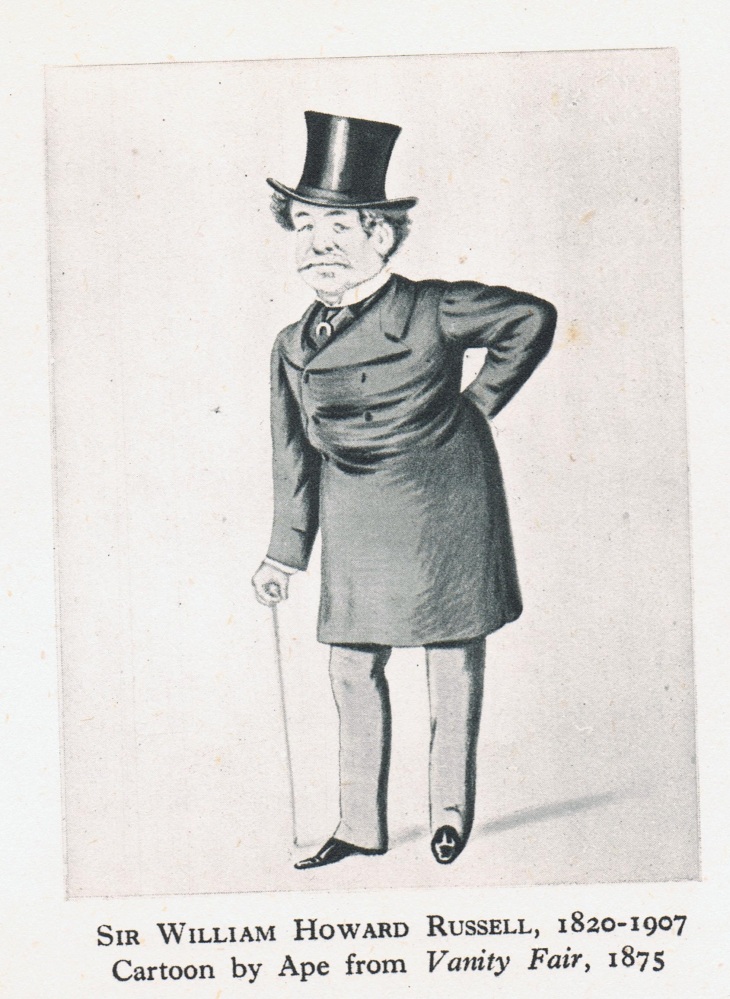
Pic: Sir William Howard Russell
Other Irish war correspondents included James David Bourchier (1850-1920), who reported from the Balkans in the 1880s for the London Times; Emile Joseph Dillon (1854-1933), the Daily Telegraph’s Moscow correspondent from the 1880s until 1903; George Lynch (b. 1868), who covered the Boer War for the Illustrated London News, as well as reporting on the Spanish-American War, the Boxer Rebellion, the Russo-Japanese War, and the 1905 Russian Revolution; Stephen McKenna, who headed the New York World’s Paris office in the 1920s; and David McGowan, Russian correspondent around 1905-6.
While war reporting was, and remains, a largely gendered profession, with men dominating its ranks, a number of women reporters have made significant contributions to the development of this trade, such as Martha Gellhorn (Spanish Civil War) and more recently the Sunday Times correspondent Marie Colvin, who died in a rocket attack in Syria in 2012. However, the pioneering female war reporter was Kathleen Blake Coleman (née Ferguson) (b. c. 1864), a Galway-born woman who moved to Canada in her early-20s and reported on the Spanish-American War in the late-1890s, becoming the first accredited female war correspondent.
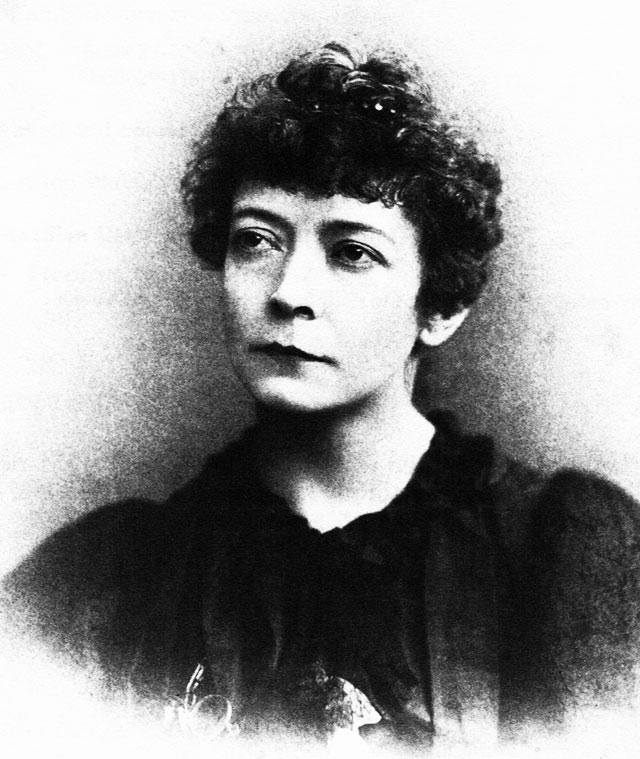
Pic: Galway-born Kathleen Blake Coleman
The prominence of Irish men and women among international war correspondents in the late-nineteenth and early-twentieth centuries is striking, yet demands explanation. John Horgan suggests that while no single factor can explain this prominence, ‘it is possible that the nature of journalism, as a career path for which university education was not a necessary qualification, may be part of the explanation’. In his short analysis of Russell, Godkin and Lynch, Daniel Mulhall sees these men as being subsumed into a wider Victorian world: ‘their worlds were those of Fleet Street and the great international crises of the second half of the nineteenth century, in which Irish affairs…were invariably a sideshow’.
Further reading
James Horan, “The great war correspondent’: Francis McCullagh, 1874-1956’ in Irish Historical Studies, 36:144 (Nov. 2009).
Daniel Mulhall, ‘Men at war: nineteenth-century Irish war correspondents from the Crimea to China’ in History Ireland, 15:2 (Mar-Apr 2007).
Philip Knightley, The first casualty: the war correspondent as hero, propagandist and myth maker (1975; rev. ed. 1999; rev. ed. 2003).
Eisenhower in Wexford, 1962
BY EMMA EDWARDS

Headline in the Irish Examiner, 24 August 1924
The south-east tourist industry has reaped great currency out of the visit of an American president in 1963. However, what is perhaps less well known is that the visit of the 35th president of the United States, John Fitzgerald Kennedy, was preceded in 1962 by the visit of the 34th. Dwight D. Eisenhower was no longer a sitting president when he visited Wexford in 1962 but his visit emanated from a gesture of thanksgiving and commemoration during the course of his presidency. In 1956 a gift from the ‘people of the United States’ was unveiled on Crescent Quay, Wexford by President of Ireland Seán T. O’Kelly (who himself had married not one but two Wexford women from the nationalist Ryan dynasty, first Mary Kate and then following her death, her sister Phyllis). The bronze statue of Commodore John Barry was designed by William Wheeler and shipped to Ireland on board the U.S.S Charles S. Sperry. Barry, referred to as the ‘father of the United States navy’, was born in 1745 in Ballysampson, Tacumshane, Co. Wexford. Having gone to see as a child of ten he settled as a merchant sailor in Philadelphia and was a ship’s master by age 21. With the outbreak of the War of Independence, he offered his services to the Continental Army. His ship the Black Prince was outfitted for naval service, renamed the Alfred and became the first ship in the Continental Navy. Commissioned as a captain he led the first American capture of a British ship and received a personal note of gratitude from General Washington. With the foundation of the U.S. Navy in 1794 Barry, though listed as the senior captain of the service, bore the courtesy title of commodore (the position of commodore was not formally created until 1862). He died in 1803.
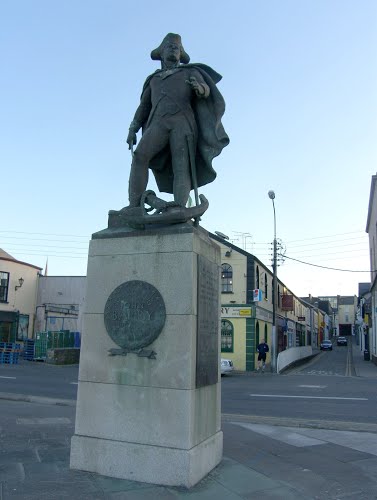
The visit of JFK to Ireland in June 1963 is considered an iconic event due to the president’s Irish ancestry, his viewing of the ‘Kennedy homestead’ in Dunganstown, New Ross and to the poignancy of his promise to be ‘back in the spring time’ with the shooting in Dealey Plaza a mere five months away. Eisenhower’s visit to Wexford was undertaken at less notice, fanfare and was bedevilled with setbacks. Eisenhower was due to make a tour of Europe in late summer 1962 when a visit to Ireland was discussed with the U.S. ambassador to Ireland. Wexford Corporation had to respond to charges from an aggrieved public and sceptical press that it had declined to receive Eisenhower. In a statement issued to the press, the Corporation claimed that ‘when the matter was first considered, the members genuinely felt that they could not do justice to such a distinguished person in mid-week.’ Eisenhower himself was also perturbed to learn that there was no airport close to Wexford. The Corporation decided to change its mind in response to ‘the wholehearted support they have now been offered from all sections of the community.’ Such support was expressed in erection of ‘We like Ike’ posters on the walls and streets of Wexford town, as reported by a journalist from the Irish Press. At a special meeting of Wexford Corporation on 16 August Alderman K.C. Morris expressed his hope that the visit would ‘clear up all the misunderstandings which had got wide publicity and should prove that Wexford at no time turned down the General’s visit’ and plans were put in place for Eisenhower’s helicopter to land on the G.A.A pitch two miles outside Wexford town. Eisenhower made quite literally a flying visit, arriving first in Dublin to stay in the Gresham Hotel and on the following day enjoying a luncheon with President de Valera. The former Supreme Commander of Allied Forces in Europe arrived in Wexford on 23 August by helicopter to a town bedecked by bunting and a higher than average population of American tourists. Cheered on from streets and doorways, Eisenhower arrived to lay a wreath at the Barry Statue. He announced that he has been ‘a dismal failure’, explaining to a crowd soaked through by a torrential downpour that he had previously enjoyed a reputation for bringing fine weather with him. Gardaí and security men reportedly fought a losing battle with photographers. According to the calculations of an Irish Examiner journalist present, Eisenhower’s speech lasted less than two minutes in which he praised Barry as ‘a great patriot’ and then spoke to the Mayor of Wexford for four minutes, the latter also making a short speech. Whisked away for lunch in the Talbot Hotel, Eisenhower was back in his helicopter twenty minutes later. President Kennedy paid his respects to the Barry statue less than a year later giving Wexford Corporation further exposure to the executive branch of the U.S. government. Barry’s statue still stands on Crescent Quay looking out onto the Slaney estuary; other statues were erected in Franklin Square, Washington D.C. and at the entrance to Independence Hall, Philadelphia.
Further Reading
Irish Examiner, Irish Independent, Irish Press, Irish Times, Aug.-Sep. 1963.
David Murphy, ‘John Barry’ Dictionary of Irish Biography.
‘I personally don’t want to see another Ballymun again’: the lessons of urban planning and regeneration
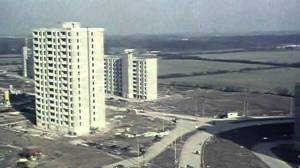
Ballymun under construction, still taken from short video see (https://www.youtube.com/watch?v=3O7G8weRc98) (26 May 2016)
On the 10 May the master of the High Court, Edmund Honohan, speaking at the new Dáil committee on homelessness highlighted many of the lessons that can be learnt from the rapid construction of social housing projects without detailed planning stating: ‘I personally don’t want to see another Ballymun again’. Honohan was highlighting that the town had become a byword for the mismanagement of urban planning and management. Perhaps it is important as the state appears set on a new phrase of rapid construction of social housing to re-examine the history of Ballymun, to see what lessons we can learn from it and if those lessons are being implemented.
Ballymun was a direct response to a housing crisis which Dublin was experiencing in the 1950s and 60s. Dublin’s housing stock was not only under pressure from a rising population but also, in the city, extremely poorly maintained. Between the summer and end of 1963 tenements across the city collapsed or were evacuated due to safety concerns. House collapses in Bolton Street and Fenian Street led to the death of four people, forcing Dublin Corporation to adopt ‘emergency measures’ to deal with the crisis. These measures included the removal of over 1,000 people from homes deemed to be dangerous, leading to a doubling of the Corporation’s housing list.
The answer to the surge in housing demand quickly came from central government: pre-fabricated buildings. Such building techniques had become popular in Britain and Europe in the 1950s/60s and offered the government a relatively cheap and rapid way to construct homes. For some the use of such modern construction techniques and the introduction of high-rise living also signalled that Ireland was entering the modern age of public housing. Alongside the provision of spacious homes, constructed to high standards, the planners and government would meet the other needs of the new community, these included: shops, schools, green spaces, playgrounds, community halls and meeting rooms, a health clinic, a swimming pool and landscaped parks. It was to be a model of high-rise living, providing families with every amenity they required. However, as highlighted by Robert Somerville-Woodward, by the time construction began, in 1965, states across Europe were already abandoning such developments due to many of the problems that would scourge the new town, including poor maintenance of communal areas and the social isolation of residents.

James connolly Tower, available at Wikimedia Commons (https://commons.wikimedia.org/wiki/File:James_connolly_Tower_2007.JPG) (26 May 2016).
The first residents began arriving in the new town in 1966 and were delighted by the homes that greeted them. For many coming from inner-city tenements and others after years in cramped conditions on the Corporation’s housing list, the provision of three and four bedroom flats and houses, with central heating and hot water on demand, was warmly welcomed. However, while the homes were deemed adequate, the lack of facilities, many of which were incomplete even in the 1970s, led to the unravelling of the project. In particular, the town centre, to primarily consist of a shopping centre was not completed until after the completion of all the residential units, meaning that some tenants now housed miles from Dublin city-centre were literally years without access to shopping facilities. Added to this, the inclusion, and hence delay, of much of the town’s social facilities and a health centre as part of the new town centre further alienated the residents. Thus, when the town was formally taken over by Dublin Corporation in February 1969 it lacked much basic infrastructure that was essential for a properly functioning urban area.
By the 1970s the socio-economic demographics of the new town changed as more affluent tenants began to leave the area. This problem was exacerbated in 1985 by the introduction of the Surrender Grant Scheme. This scheme gave £5,000 to residents who decided to purchase their house, but as flats were not covered by the scheme many residents seeking to purchase their home sought transfers to houses. The scheme was an un-mitigating disaster for Ballymun, and in 1985 over 1,000 flats contained new tenants. This turnover of residents was to continue into the future and was in a large part responsible for difficulties creating a sense of community within the town. In tangent with this, many offers of housing in the area were declined, leading to the accumulation of a high percent of those from a social-economic deprived background or with substance abuse problems being housed there, by the 1980s the area suffered from a severe drugs problem.
Demolition of Séan MacDermott tower, available at Wikimedia Commons (https://commons.wikimedia.org/wiki/File:MacDermott_Implosion.JPG#globalusage) (26 May 2016).
Despite, and perhaps because of, the difficulties that the community faced, many groups and organisations were formed to aid in the development of facilities and supports. These ranged from youth groups, to the establishment of a credit union, to other groups pushing for improvements in housing and the built environment. In the 1980s/90s a number of reports were commissioned to seek a way to solve the many difficulties that the town’s population faced. The results of these was the establishment of Ballymun Regeneration Ltd. in 1997, which was responsible for the demolition of all flat complex’s in the estate and their replacement with housing. The planners of the ‘new’ Ballymun would seek to address many of the failures of the original project. As well as the replacement of existing social housing, private housing would also be constructed to change the social-economic demographic of the area; schools would be upgraded; a new, modern shopping centre would also be part of the plans, as would a theatre and other recreational facilities. The area would be provided ample playgrounds and of extreme importance would be an investment in the human as well as the built capital of the area. A renewed focus on educational attainment and training would seek to improve not only the physical environment of the area but also provide greater opportunities to engage in the ‘Celtic tiger’. For this was truly a creation of that tiger, Ireland now had the money to correct the mistakes of the past, indeed break with the past, and what better way to demonstrate that the economic miracle was benefitting everyone than the erasure of those tower blocks that had come to signify the inequality of Irish society?
The regeneration of Ballymun has seen the demolition of all flat complexes and the construction of some of the promised facilities including a new swimming pool and the axis theatre. However, with the economic downturn much of the promised amenities have not been delivered. In particular, with the closure of Tesco’s in 2014, the shopping centre’s anchor tenant and one of the last remaining shops, Ballymun is again without a proper shopping centre. (The site of the new proposed centre remains vacate).
Thus, have we learnt the lessons of Ballymun? Like Edmund Honohan, the state has no desire to build large-scale social housing estates again. Rather the ideal for urban planners is a social mix, which house’s tenants from a range of social and economic backgrounds. This type of housing means that those engaged in anti-social behaviour will not become an overarching feature of any area; that amenities for the whole community can be funded by the community; that commercial enterprises, such as shops, will see the benefits of serving such communities. It is these lessons that the government and local authorities seem to have taken from the experience of Ballymun. But for residents of such large-scale social housing projects many of these lessons have been ignored during the recession. As can be seen in Ballymun, the lack of a shopping centre was deemed one of the central concerns of tenants arriving in the 1960s, and yet the same problem exists in 2016. Throughout the town’s existence external financial factors and economic downturn have affect the provision of services. This should be the primary lesson that we take from this case study: that short-term savings lead to long-term problems that are also much costlier to resolve.
Further reading
Robert Somerville-Woodward, Ballymun, a history (2 vol., Dublin, 2002) i & ii; see also Robert Somerville-Woodward, Ballymun, a history, Synopsis (Dublin, 2002), available at Ballymun Regeneration Ltd. (http://www.brl.ie/pdf/ballymun_a_history_1600_1997_synopsis.pdf) (20 May 2016).
Boyle M and Rogerson R J (2006) ‘“Third Way” urban policy and the new moral politics of community: A comparative analysis of Ballymun in Dublin and the Gorbals in Glasgow’ in Urban Geography, xxvii, pp 201-227, available at (http://strathprints.strath.ac.uk/681/1/strathprints000681.pdf) (20 May 2016).
Ballymun regeneration Ltd., Sustaining regeneration: a social plan for Ballymun, available at Ballymun Regeneration Ltd. (http://www.brl.ie/pdf/SRBallymunLowRes_FA.pdf) (23 May 2016).
And for a look at the community’s view of the regeneration:
Ballymun Community Action Program (CAP), On the Balcony of a new millennium, regenerating Ballymun: Building on 30 years of community experience, expertise and energy (Dublin, 2000), available at (https://uniteyouthdublin.files.wordpress.com/2015/01/on-the-balcony-regenerating-ballymun.pdf) (20 May 2016).
Bio
Adrian Kirwan, co-editor of Holinshed Revisited, is an Irish Research Council funded Ph.D. candidate at the Department of History, National University of Ireland, Maynooth. His research focuses on the interaction between society and technology, more about his research can be found here.
‘Enjoyment and great entertainment’ in nineteenth-century Ireland’s institutions
The geographic and social landscapes of nineteenth-century Ireland were significantly altered by the establishment of numerous institutions, largely aimed at confining, relieving and treating the deviant, destitute and sick poor. They ranged from prisons and bridewells, to lunatic asylums and medical hospitals; from houses of industry, mendicity societies and Poor Law union workhouses, to Magdalen asylums, industrial schools and reformatories. While numerous establishments (such as prisons and hospitals) dated from earlier periods, a significant upsurge was witnessed in the nineteenth century, reflecting a wider ‘institutional zeal’ (Cox, 2009) throughout the transatlantic world in this period.
Speaking broadly, these institutions are popularly associated with harsh and cruel regimes, untrained and uncaring staff, approaches to illness (especially mental illness) that lacked compassion, and conditions that bred disease and death. Perceptions of these institutions, and life within them, are generally negative. One question which has always fascinated me is the undeniable fact that in these harsh institutions where the lives of residents (staff and patients / prisoners / inmates) were subject to strict disciplinary regimes, there were moments of fun, laughter and joviality. I seem to recall Holocaust survivor Elia Wiesel’s account, in his Night, of a journey on a train to a concentration camp and his recollection of a young couple having sexual intercourse. Even in the direst of circumstances, aspects of life continue as before. Turning to Irish workhouses, asylums and other institutions, surely there were times when jokes were told, games were played by children, and people engaged in small, private acts of generosity and humanity. Of course, our understanding of the past is shaped by the surviving sources; for most of these institutions, the masses of poor patients / prisoners / inmates left behind few records of their experiences and thoughts. As such, what little understanding we can gain of their lives are filtered through the records, and perspectives, of the managers of these institutions.
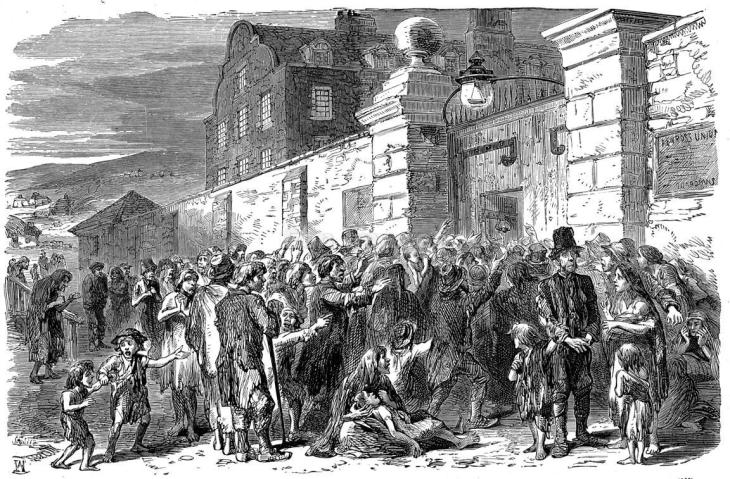
In my work, on poverty, begging, and charity in eighteenth- and nineteenth-century Ireland, I have caught glimpses of this aspect of life for the poor inside institutions. In those instances, the occasion for ‘enjoyment’ was organised by the managing committee / governors – such as a ‘feast’ – rather than a spontaneous experience of frivolity arising from the residents. This is most likely arising from the fact that the sources that provide these all-too-rare glimpses are usually the minutes and reports of the controlling body of the institution: an event was organised and recorded by the managing committee.
Seasonal treats were common in many institutions. In the premises of the Dublin Mendicity Society, a charity founded in 1818 to clear the streets of beggars, paupers were usually treated to a Christmas feast, in one instance being fed ‘roast beef and plum pudding’. The same Dublin charity also organised trips for its pauper children to the Zoological Gardens in the Phoenix Park, for ‘advantages of improvement and recreation’. Significant public events were also the occasions for treating the inmates of such institutions. In June 1838, the coronation of Queen Victoria was marked by Limerick Corporation ordering the first public illumination since Waterloo, as well as providing money to the city’s Mendicity Society and House of Industry ‘to provide the pauper inmates of these places the enjoyment of a comfortable breakfast and dinner, in commemoration of this event’. Two years later, to mark the marriage of Queen Victoria to Prince Albert, the Lord Lieutenant, Lord Ebrington, subsidised ‘an abundant dinner of prime ox beef’ for the ‘numerous mendicant poor’ in the Dublin Mendicity Society’s premises. This feast was complemented by the distribution of ‘180 saffron cakes…amongst the children of the [society’s] schools, being the gift of a member of the committee’. The royal marriage was also honoured in Clonmel, where the town’s mendicants ‘were supplied by subscription with 300 loaves of bread and 300lbs. of beef’. In March 1863 the Prince of Wales’s marriage was marked by ‘entertainment’ and ‘great enjoyment’ for 350 patients at the Richmond District Lunatic Asylum (Grangegorman) on Dublin city’s north-side. A rare insight from a patient’s viewpoint comes in a letter of complaint, composed by a patient of the Cork Street Fever Hospital, Dublin in 1816, wherein the patient (William McLoughlin of Wood Street) alleged that other patients bribed the ward nurses for the privilege of staying up late, drinking tea and singing.

Image: An 1830s newspaper notice, recording the visit to the Dublin Zoological Gardens of child paupers from the city’s Mendicity Institution
Contrary to the quip of a colleague who read this article, I am not suggesting that life in workhouses was fun! I believe that to highlight these (admittedly few) recorded instances is not to deny the level of suffering in such institutions, but, rather, to deepen our understanding of the varied experiences of those who lived within their walls, as well as the actions and motivations of those in control of these institutions.
Further reading:
John O’Connor, The workhouses of Ireland : the fate of Ireland’s poor (1995).
Audrey Woods, Dublin outsiders: a history of the Mendicity Institution, 1818-1998 (1998).
For a wider discussion of institutions in this period, see Catherine Cox, ‘Institutionalisation in Irish history and society’ in Mary McAuliffe et al (eds), Palgrave advances in Irish history (2009).
The Royal Irish Constabulary: centralised and ‘political’ policing in Ireland
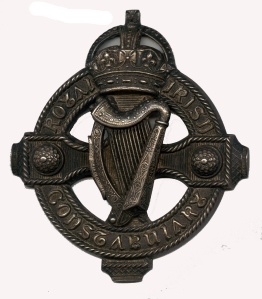
Tack badge from the RIC Mounted Division
The policing of Ireland was a topic that vexed politicians from the act of Union, 1800, onwards. The country was prone to disturbances ranging from that particularly Irish pastime of faction fighting to agrarian unrest. In the opinion of Robert Peel, undersecretary at Dublin Castle, the provision of law and order by the country’s ‘natural’ leaders, meaning local landowners, had broken down. However, difficulties with policing spread beyond local notables to the county constabulary. These forces were controlled by local magistrates, appointed by the grand jury and were generally considered worthless.
The situation led to an ongoing struggle between local landowners and Dublin Castle, as the central administration attempt to reform policing and the administration of justice throughout the island. The outcome of this was the eventual establishment of a centrally control nation-wide police force in 1836. The Irish Constabulary (the Royal prefix would be awarded in 1867, following the force’s efforts in suppressing the Fenian rising of that year) was formed in 1836.
The government’s efforts to centralise the RIC was in direct response to the divided nature of Irish society. While the natural leaders of local politics were predominantly Protestant, the vast bulk of the population were Roman Catholic. While we must be careful not to simplify the divisions between these communities, there were two completing political and religious camps on the island. Due to this, any decision by government or its arms, such as the police, would be scrutinised for partiality. Given the formation of the Irish Constabulary only seven years after the granting of Catholic Emancipation, by a tory government reliant on the support of O’Connell, fears of centralised (political) policing were rife. Indeed such centralised policing was contrary to British ideas of liberty; the ideal was a non-military, regional police force whose control was in local hands. The RIC had more in common with European models of policing than British. Indeed, its intelligence gathering activities were more akin to policing in Indian than Britain.
By having a centralised police force throughout most of the island (the Dublin Metropolitan Police (DMP) was responsible for policing in Dublin) the Irish administration at Dublin Castle sought to ensure that police actions did not incite conflict. Hence, fears of political policing were in a manner well founded. Thus, it was Ireland’s well-known uniqueness in terms of political and social unrest that convinced the government of the need for a centralised and ‘politically’ controlled police force. This was to have long-term impacts on the structure of policing in Ireland, leading to a high level of correspondence. The police force was to become a sort of unofficial civil service. It was to compile statistics on a range of subjects, ranging from farming outputs to surveillance. However, this centralisation also removed the freedom of action of local commanders, leading, in many cases, to the most mundane decisions being taken at high levels of the force’s command structure.
Further Reading
Galen Broeker, Rural disorder and police reform in Ireland, 1812-36 (London & Toronto, 1970).
Stanley H. Palmer, Police and protest in England and Ireland, 1790-1850 (Cambridge, 1990).
Margaret O’Callaghan, ‘New ways of looking at the state apparatus and the state archive in nineteenth-century Ireland “curiosities from that phonetic museum”: Royal Irish Constabulary reports and their political uses, 1879-91’ in Proceedings of the Royal Irish Academy. Section C: Archaeology, Celtic Studies, History, Linguistics, Literature, civ, C, no. 2 (2004), pp 37-56.
Bio
Adrian Kirwan, co-editor of Holinshed Revisited, is an Irish Research Council funded Ph.D. candidate at the Department of History, National University of Ireland, Maynooth. His research focuses on the interaction between society and technology, more about his research can be found here.
The Aud and Karl Spindler; Good Friday 1916
By David Gahan
With events commemorating the Easter Rising expected to reach a high point in Dublin this weekend, aspects and events surrounding the Rising are rightly being looked at from various angles. The story of the Aud, its captain, crew and cargo of arms is one such aspect of the 1916 narrative and a chance discovery of some text from a talk given by Karl Spindler, captain of the Aud added some new insights to this story.
The story of the Aud is often overshadowed by the landing of Roger Casement from a German U-boat, on the Kerry coast on the same day and his subsequent arrest, imprisonment and execution in August 1916. The background to this is the efforts of Clan na Gael in America and the Irish Republican Brotherhood (IRB) in Ireland to secure an arms shipment from Germany to help stage an insurrection in 1916. John Devoy, a Clan na Gael leader had numerous meetings with members of the German Consulate in New York, including Franz von Papen, to help facilitate this operation. Casement was already in Germany to further this and pursue his plan of raising an Irish Brigade from Irish prisoners of war, though Devoy was sceptical of this and wary of some of Casements plans. Robert Monteith was also sent by the Clan to Germany. In early March Devoy received word that a ship with 20,000 rifles and ammunition would arrive in Tralee Bay on the morning of 20 April, Holy Thursday. But on 14 April Devoy received a hand delivered message from Ireland that the arms must not be landed before Easter Sunday night. This spelt disaster for the operation as the Aud which had no wireless on board, was already on its way to Ireland to rendezvous on the agreed date.
Karl Spindler relates how he was tasked with choosing twenty-one men for an expedition of which he did not know the plans; was given command of a ship, the Libau and that arms were loaded onto it in Lübeck. Here they realised this was not a normal wartime operation when they changed from German uniforms into common dungarees. The ship was provided with official papers and ‘became’ a Norwegian vessel, the Aud. The efforts to disguise the ship were meticulous, the crew were ordered not to shave and to walk about with their hands in their pockets while in the view of other ships. Norwegian newspapers and books were provided, pictures of girls and letters were put up all over the ship, in cupboards etc. The crew could not speak Norwegian but were to speak in low-German if encountered by the British in an attempt to disguise their nationality. Spindler even bought a dog in Lübeck to have on board, ‘every sailor knows that every tramp steamer has a dog’ and he was to be visible if enemy ships were passing.
Through skilful navigation and planning Spindler managed to steer the Aud through four British blockades. At four o’ clock in the afternoon, 20 April, they reached their rendezvous point, Innistooskert Island in the middle of Tralee Bay. They waited until noon on Good Friday for some signal from the shore which was not forthcoming, then with a British patrol boat approaching them they left the bay but later that evening were surrounded by British ships and instructed to proceed to Cobh. The next morning as the Aud entered Cobh, the crew raised the German Ensign and scuttled the ship.
Though part of the German planning was precise, to send a ship without a wireless and the make-up of the cargo, fifteen-year-old Russian rifles that had been captured on the Eastern Front, raises some doubt over their commitment to the expedition.
Casement had been put ashore on Good Friday, but weak from sickness and the exertions of rowing to dry land was left at McKennas Fort, Banna Strand while his comrade Monteith sought aid. Casement was captured some hours later; Monteith remained on the run for eight months before a passage was secured returning him to America.
These events happened in Kerry and off the South-West coast on Good Friday/Easter Saturday, one hundred years ago.
Bio:
David Gahan is a final year Ph.D. candidate at the Department of History, Maynooth University.
The Dublin telescope makers and the empire: a short history of Grubbs
Great Melbourne Telescope, 1869, available at WikiMedia Commons (https://commons.wikimedia.org/wiki/File:Great_Melbourne_Telescope_1869.JPG?useland=en-gb) (23 March 2016).
Thomas Grubb was born to the Quakers William Grubb and his wife Eleanor (née Fayle) in 1800. Around 1832 Grubb established a mechanical engineering workshop in Dublin and began constructing modest reflector telescopes for his own use. Through his interest in astronomy he began undertaking various commissions for the erection and construction of telescopes, including a fifteen-inch reflector for the Armagh observatory. In order to mount this large telescope Grubb designed a system of triangle levers to reduce stress on the mirror. A similar system was employed by William Parsons, third earl of Rosse, in the construction of his six-foot reflector, ‘the leviathan’, at Birr Castle in the 1840s. In this early period Grubb’s work was primarily funded by private individuals.
These commissions soon brought him to the attention of scientific figures throughout the United Kingdom, and he was hired to construct telescopes for the Royal Observatory, Greenwich, and the University of Glasgow. He also fabricated twenty sets of magnetometers for Professor Humphrey Lloyd’s (Trinity College, Dublin) efforts to establish a network of magnetic observatories throughout the British Empire. These were to further scientific understanding of geo-magnetism and, eventually, thirty-three observatories were set-up throughout the world on the same model as the magnetic observatory based in Trinity College, Dublin.
A great deal of this research was not driven by ‘pure’ scientific interest. The British state, as a maritime nation, was strongly motivated to fund astronomy and the production of star charts. In fact, George Airy, Astronomer Royal, saw the main tasks of the Royal Observatory, Greenwich, as producing accurate stellar and planetary maps and the regulation of ships chronometers, all essential for navigation. Thus, the successful trajectory of Grubb’s business was, in many ways, firmly tied to wider British Imperial and trading interests. As the nineteenth century progressed the British state was to begin funding ‘pure’ research to a greater extend and this was to provide Grubb with much work.
It was the success of the Rosse telescope, which had gone someway to answering the question of the resolvability of nebulae, that was to prompt calls for a similar telescope to be erected in the southern hemisphere. This was realised in 1869 when a four-foot Grubb reflector was installed in Melbourne. Unfortunately, this telescope was to be a resounding failure, probably due to the inability of staff in Melbourne to polish the mirrors (these had been made using polished metal instead of the silver-on-glass method that was becoming popular). Thomas Grubb was to die in 1878 but the company was to remain in operation under the guidance of his son, Howard, who had taken control in 1868.
Howard Grubb was to remain in charge for fifty-seven years and in this time constructed most of the large telescopes erected across Britain and its empire, including five for the Royal Observatory. In addition, the company also constructed telescopes for a number of others, including a twenty-seven-inch reflector for the University of Vienna, 1881. In this period the majority of Howard’s large instruments were refractors. In the closing years of the nineteenth century the company also began making photographic instruments for astronomical observations. The previous system of human observers sketching their observations had been open to error and encountered difficulties when attempting to draw large and detailed star charts. In 1890 the company delivered seven, of thirteen, such instruments that were used as part of the Carte du ciel (map of the sky) project, the rest were constructed by the Henry brothers of France. (It was on one of these Grubb telescopes that Arthur Eddington was to show the distortion of a star’s position when its light passed near the sun, thus providing the first proof of Einstein’s theory of relativity).
In the twentieth century the company was to put its optical expertise to military use, designing rangefinders, gunsights and the first submarine periscope. This was to tie the fortunes of the company to the state in an even more obvious manner. Due to its increased importance to the war effort, the company transferred to the south of England in 1918. This move was to prove decisive and, with the end of the First World War, Grubb was unable to meet increasing costs. The firm was sold to Charles Parson, the youngest son of the third earl of Rosse, in 1925 and the new firm, ‘Sir Howard Grubb, Parsons and Co.’ was to continue in operation until 1985.
Further reading
Ian Elliott, ‘Grubbs of Dublin: telescope makers to the world’ in Juliana Adelman and Éadaoin Agnew (eds), Science and technology in nineteenth-century Ireland (Dublin, 2011), pp 47-62.
Anita McConnell, ‘Scientific instrument makers’ in Oxford Dictionary of National Biography (Oxford, 2015), available at (www.oxforddnb.com) (19 Mar. 2016).
John Burnett, ‘Grubb, Thomas, engineer and telescope builder’ in Oxford Dictionary of National Biography (Oxford, 2015), available at (www.oxforddnb.com) (19 Mar. 2016).
Bio
Adrian Kirwan, co-editor of Holinshed Revisited, is an Irish Research Council funded Ph.D. candidate at the Department of History, National University of Ireland, Maynooth. His research focuses on the interaction between society and technology, more about his research can be found here.
MUSEUM OF THE MONTH: Anne Frank House, Amsterdam
BY EMMA EDWARDS
As a historian I always feel a rush of gratitude for those diarists who maintained such painstakingly detailed and regular entries. Some diaries are preserved self-consciously for posterity; others avoid destruction or oblivion through good luck or meticulous care, only for the value of their contents to become apparent through chance investigation, donation or publication. Diaries are not, as few if any historical sources can be, objective, unbiased or comprehensive. Yet just as historical commentary is shaped by the perspective of the historian, diaries provide a fascinating insight into the perspective of one individual on wider historical events: perspectives that can be representative or completely unique. This intersection of the personal with the political lends greater colour to the narrative and reminds us that history is not just something that happened, but something that people actually lived.
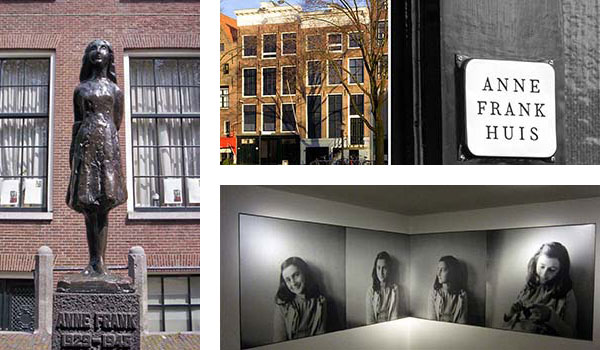
In terms of diaries of historical significance, the diary of Anne Frank is arguably the most famous and certainly most widely read. As such I could not pass up on the opportunity to visit a monument to her experience and to the first primary source I had ever read as a child. Anne Frank House (Prinsengracht, Amsterdam) seeks to document Anne’s experience as a microcosm of the persecution of Dutch Jews and (as in the case of Anne’s family) of German Jews whose exodus to other European cities such as Amsterdam did not count on Hitler’s Blitzkrieg of 1940 and the extension of Fortress Europe to the Netherlands. As you enter the exhibition, context is provided on the Jewish quarter of Amsterdam and the anti-Jewish laws introduced after 1940. Documents are put on display in a space renovated in the 1990s to recreate the original front of the building, including the warehouse and offices of Opekta, Otto Frank’s business, licensed to sell pectin, the gelling agent necessary for jam making. The museum documents the gift of Anne’s diary and her cherished ambitions to be a writer. Text from its pages are used to narrate Otto’s decision to hide his family in unused rooms (the ‘secret annex’) in 1942 with the help of office staff while keeping it a secret from warehouse staff. Visitors travel up to the ‘secret annexe’ behind a bookshelf (the original bookshelf is on display) to enter the hiding place. Again excerpts from Anne’s diary are used to evoke the strained atmosphere of the annex with the Franks sharing the small space with another family, the van Pels, and a dentist, Fritz Pfeffer. Anne’s own sleeping space has been preserved and on display are copies of her posters of movie stars and the young Princess Elizabeth.
The visitor makes their way into a museum space that provides a sober reflection on the fate of the Franks, whose hiding place was stormed by the Security Police on 4 August 1944. Of the eight people in hiding only Otto Frank survived-he was in Auschwitz for its liberation. Short video clips provide first-hand accounts of the concentration camps, including an interview with a friend of Anne’s who met Anne in Bergen-Belsen only a few short weeks before her death. Another of the museum’s rooms reflects on the impact of Anne’s diary, preserved by Opekta office worker Miep Gies who returned it to Otto for it to be subsequently published in seventy languages. A manuscript version can be viewed in the museum. I was really interested to learn that in the months before the arrests, Anne had been editing and revising her diary and working on a novel The Secret Annex. This certainly prompts me to reflect on how much diarists consider if and how their personal entries will be preserved and received by posterity. The exhibition is a triumph of simplicity, in allowing the force and poignancy of the diary to be presented with the minimal intervention of audio-visual material that so often proliferates and which can, in some cases, distract from the contents and missions of museums. The curators thankfully resisted the urge to include too much material in the secret annex space which allowed them to successfully evoke the stark reality of two years of claustrophic confinement.
In terms of practicalities Anne Frank House is located quite close to the centre of Amsterdam and is easy to find via many of the tram lines. Booking a ticket in advance is strongly recommended as queues can reach epic lengths; however the museum staff do an excellent job of ensuring the small space does not become too crowded.
See: http://www.annefrank.org/en/Museum/Practical-information/
‘Zealous friends’: challenges for historians of the language of charity
Negotiating changes in the meaning of words is a frequent challenge for historians. When consulting primary sources, one is reading, interpreting and transcribing words as they were used in a given period from the past; it is in the context of that period that the words must be understood. Yet, the historian may then use the same words in his/her own analysis (that is, in the secondary source). This can present a challenge for the reader of the historian’s subsequent published work.
This was demonstrated to me recently at a session at the annual conference of the Irish History Students’ Association in NUI Galway. The session focused on ‘Shades of Roman Catholicism in Ireland, 1844-1950’. One speaker presented an excellent paper on Catholic charity in nineteenth- and early-twentieth-century Dublin and, not surprisingly, the word ‘zeal’ was regularly referenced, in quotations from primary sources. It struck me as interesting because just moments later, in another excellent paper, the next speaker, in her interpretation of Catholic missionary work, described some historical figure as being ‘over-zealous’, which implied some manner of negative connotations.
This linguistic irregularity caught my attention as ‘zeal’ is a word that I have had to negotiate in my own research into charity and philanthropy in nineteenth-century Ireland. Charitable works in this period were driven by religious influence and defined by confessional identity. This was a period of spiritual and devotional revival in both Catholic and Protestant Europe, and the Irish manifestations of these revivals were marked by localised nuances. Much of my research in recent years has focused on the responses of charitable societies and denominations to poverty and beggary, and the word ‘zeal’ commonly appears in the primary sources. However, where it does appear, ‘zeal’ had positive connotations; for instance, a person’s obituary would note the individual’s ‘zeal’ to undertake philanthropic work, set against the ever-constant backdrop of religious inspiration. ‘Zeal’ was used to describe a person’s dedication to furthering the spiritual well-being of others, particularly the distressed, marginalised and irreligious. Any study of the language of charity – the best Irish example being the work of Margaret Preston – will inevitably come upon the use of ‘zeal’ in contemporaneous sources. For instance, in the evangelical Christian Examiner magazine in 1829, the rector of Powerscourt, Rev Robert Daly, a fascinating figure for his views on poverty and poor relief as much as for his influence during the ‘Second Reformation’, praised the evangelical wing of the Church of Ireland as follows: ‘To their zeal, devotedness, piety, and practical usefulness, I believe the church is indebted for the place it now holds in public opinion…’ The praising of one’s ‘zeal’ was cross-denominational and, in my own research, appeared most frequently in sources pertaining to Catholic female religious communities, particularly in obituaries for deceased members of orders and congregations. One Presentation Sister was remembered after her death as exerting ‘a most persevering zeal for the instruction of poor children’, while following the death in 1818 of Sister Mary Teresa (Catherine Lynch), the Sisters of Charity lamented that ‘the poor have lost a zealous friend, and the community a striking example of religious virtues’.
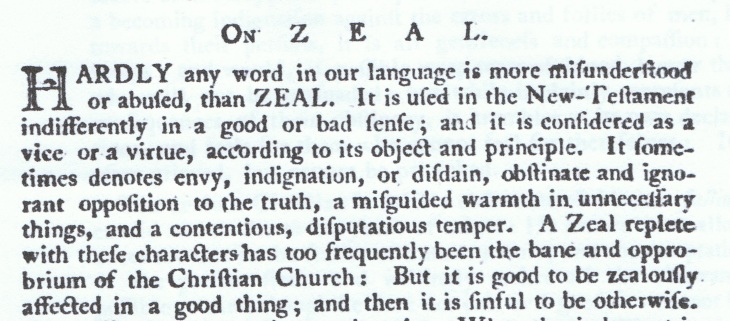
(‘On Zeal’ in Methodist Magazine, vol. 21 (May 1798))
The significance of this is that in today’s parlance ‘zeal’ often carries negative connotations. Religious zeal is associated with fundamentalism and intolerance, and is regularly used in an accusatory sense. Yet, among charity workers and philanthropists in the nineteenth century ‘zeal’ was a benevolent motivating force, as captured in an evangelical Methodist publication from 1798: ‘It is the SPIRIT of CHRIST infused, with a sense of his love, into the heart; it is a generous philanthropy and benevolence, which, like the light of the Sun, diffuses itself to every object, and longs to be the instrument of good, if possible, to the whole race to mankind.’ Historians negotiating words such as ‘zeal’ must be cognisant of what these terms meant to those who used them in the past (in the primary sources) and what they mean to readers of their own work (secondary sources).
British social reformers in nineteenth-century Ireland
In researching the history of poverty and charity in pre-Famine Ireland, I have been struck by the constant flow throughout Europe and the Atlantic world of ideas of moral and material improvement. Philanthropists and social reformers, either acting in an individual capacity or as part of a corporate entity (such as a charitable or intellectual society), regularly exchanged correspondence with colleagues in other countries, in which they shared their experiences and ideas of poor relief, medical treatment and education initiatives, to name but a few areas of interest.
Furthermore, many individuals travelled abroad extensively, gaining a first-hand insight into the work of other philanthropists. Many of the leading British social reformers in the late-eighteenth and early-nineteenth centuries travelled to Ireland, visiting various institutions and meeting contacts among the philanthropic urban middle classes. The value of travellers’ writings has long been appreciated by historians, from Constantia Maxwell’s work in the 1940s and 1950s, to Christopher Woods’s recent guide to travellers’ accounts as source material (published in the Maynooth Research Guides to Local History series). What attracted many of these social reformers to this island was the impression that Ireland was a distinctive place on the fringes of Europe, singularly afflicted by poverty and moral decay. As Niall Ó Ciosáin has argued in his most recent work (Ireland in official print culture), the tropes of social conditions in Ireland being indescribable and unimaginable, and worse than those anywhere else, were well established in contemporary discourse. These motifs are to be found in the reported proceedings of parliamentary debates and inquiries, public sermons, and reports of social reformers. Having noted this trend, it is useful to briefly identify just some of these individuals, whose influence was international and who visited Ireland at some point in this period:
Elizabeth Fry (née) Gurney (1780-1845), penal reformer and philanthropist. By the time she travelled to Ireland in 1827, Fry was already a noted campaigner for prison reform, particularly in the incarceration of women and children. During her three-month visit to Ireland in 1827, Fry and her brother (Joseph John Gurney) visited around forty welfare and custodial institutions throughout the country – prisons, lunatic asylums, mendicity asylums, houses of industry. They co-authored a report to the Lord Lieutenant on their inspections of these institutions.

Caption: Quaker Elizabeth Fry, who drove prison reform in early-nineteenth-century Britain and Ireland
Joseph Lancaster (1778-1838), educationist in London. The Lancaster model of education was based on the monitoring system, whereby older pupils (monitors) taught the younger pupils, overseen by an adult master. His educational reforms proved influential and were adopted by the Kildare Place Society, whose founding meeting in Dublin in 1811 was attended by Lancaster. Lancaster visited Ireland on a number of occasions and was a popular public speaker; a lecture in Drogheda in 1815 was attended by a reported 1,500 people.
Robert Owen (1771-1858), philanthropist and industrialist. Owen is best known for establishing the town of New Lanark in Scotland, centred around his cotton mill enterprise. His enterprise was marked by reduced working hours and improved housing for employees, and the provision of infant education. Owen’s tour of Ireland lasted from October 1822 to April 1823, a period of famine in western Ireland and during his visit, Owen visited many distressed areas. Throughout the country, he held public meetings, at which he promoted his ideas for planned communities. Two years later, Owen gave evidence to a parliamentary inquiry into poverty in Ireland and his New Lanark model was implemented at Ralahine, County Clare in the early-1830s.
Caption: Robert Owen, whose planned industrial town at New Lanark (right) inspired a similar experiment at Ralahine, County Clare.
Rev. Thomas Chalmers (1780-1847), Church of Scotland minister and social reformer. Chalmers was perhaps the most well-known and influential public intellectual in the first half of the nineteenth century. In St John’s parish in Glasgow, he pioneered a poor relief scheme based on house-to-house visiting of the poor and voluntarism in the provision of assistance. Chalmers travelled to Ireland on a number of occasions, being regularly invited by Irish ministers to deliver charity sermons, in the knowledge that Chalmers would attract large crowds of donors. In advance of his sermon at the opening of the Fisherwick Place meeting house in Belfast in 1827, members of the public were advised that only ticket-holders would be admitted, given the demand for places.
Book review: Fergal Donoghue, Crime in the city: Kilkenny in 1845 (Dublin, 2015)

MAYNOOTH CASTLE IN 1885, AVAILABLE AT WIKIMEDIA COMMONS (HTTP://COMMONS.WIKIMEDIA.ORG/WIKI/FILE:MAYNOOTH_CASTLE_1885.JPG) (ACCESSED 6 FEB. 2015).
On the 10 September the latest books in the Maynooth Studies in Local History series were launched at Maynooth University. This series -edited by Professor Raymond Gillespie and published by Four Courts Press- has been producing valuable local history studies since 1995 and has accumulated a total of 122 pamphlets. These cover a broad geographic spread across the whole of Ireland. The pamphlets normally focus on a particular aspect of their respective area’s history. They offer an informative, enjoyable and accessible insight into the history of selected local areas. Of particular worth is the ability of the series to connect the local to the national and demonstrate how wider national trends played out in a local setting. In addition, the relatively short nature of these publications means that they are ideally suited to those with little time on their hands.
This year six books were published, namely: Gerard Dooley, Nenagh, 1914-21: years of crises; David Doyle, The Reverend Thomas Goff, 1772-1844: property, propinquity and Protestantism; Adrian Empey, Gowran, Co. Kilkenny, 1190-1610: custom and conflict in a baronial town; Pierce A. Grace, The middle class of Callan, Co. Kilkenny, 1825-45; Ann O’Riordan, East Galway agrarian agitation and the burning of Ballydugan house, 1922; Fergal Donoghue, Crime in the city: Kilkenny in 1845.
Typical of the high calibre of the series is Fergal Donoghue’s Crime in the city: Kilkenny in 1845 (Dublin, 2015). The book provides a fascinating insight into the nature and punishment of crime in Kilkenny city in 1845. The book begins by providing much context in terms of the social condition of the city in the period. It demonstrates that well-known generalisations such underemployment and the lack of a wage economy created a significant underclass in the city. In doing so the book also highlights the conditions in which this underclass lived. The author is also careful to guide the reader through the nuances of the locality and demonstrates that there were two sides to the city: one living in poverty alongside another living in relative wealth. The second chapter places justice and punishment in the city in a national context and gives the reader a good understanding of how the justice system in the Kilkenny operated in 1845.
The final chapter of this short book is a testament to the great efforts of the author to garner as wide a picture of crime and its punishment in the city as possible. The author demonstrates not only the effects of the famine on crime in the city but also through careful and insightful analysis of the statistics highlights how the study of sentences can provide an insight into the fears of the city’s elite.
Overall this short book offers a fine contribution to not only our understanding of crime and punishment in Kilkenny city but also to the wider national history of this subject. In doing this the author provides a valuable insight into the motivations and fears of those responsible for the punishment of crime in mid-nineteenth century Ireland.
This book (priced €8.95) and the rest in the series are available via the Four Courts Press website at: http://www.fourcourtspress.ie/books/browse/history/maynooth-studies-in-local-history/
Bio
Adrian Kirwan, co-editor of Holinshed Revisited, is an Irish Research Council funded Ph.D. candidate at the Department of History, National University of Ireland, Maynooth. His research focuses on the interaction between society and technology, more about his research can be found here.
The first transatlantic telegraph cable

Map of submarine cable between America and Europe (1858), in Howe’s Adventures & Achievements of Americans, available at Wikimedia commons (https://commons.wikimedia.org/wiki/File:Atlantic_cable_Map.jpg?uselang=en-gb) (21 Aug. 2015).
The recently approved €300 million transatlantic fibre optic cable to connect Mayo and New York will now doubt provide an important communication link between the US and not just Ireland but also the rest of Europe. While there is always an element of risk with such infrastructural projects, this one can build on a history of transatlantic telecommunications technologies going back to the mid-nineteenth century. The first attempt to construct a telegraph cable across the Atlantic Ocean was to take place between 1857-8. Given the fact that the first submarine telegraph cable had been laid only seven years before, between Britain and France, the scale of ambition must have been obvious to contemporaries.
However the story of this first cable attempt started much earlier. In 1854 the American financier Cyrus Field backed the construction of a telegraph line that would connect St. John’s, Newfoundland, to the rest of North America’s telegraph network; this line would be completed in 1856. As the distance from here to the British Isles was c. 1,000 miles shorter than from New York, the new cable could seriously impact on the time taken to transmit intelligence across the Atlantic and shorten the length, and hence expense, of any such cable. Such a crossing would benefit from a natural deep-sea plateau, which would mean that the cable would not have to descend too deep, and, unbeknown at the time, would protect the cable from the mid-Atlantic ridge.
In 1856 Field reached an agreement with John Watkins Brett (who had be responsible for the laying of some of the early telegraph submarine cables) and Charles Bright (the chief engineer of the British and Irish Magnetic Telegraph Company (B&I MTC)) to form the Atlantic Telegraph Company. A high proportion of the company’s shares were bought by directors of the B&I MTC, the chairman of which was Charles’s brother Edward Bright.
The first order of business for the new company was to secure some type of funding from the government. Despite the prevailing laissez-faire ideology, trade with North America was significant and the development of a rapid means of communication would no doubt be of benefit to the British economy. Due to this reason the government agreed to provide ships and the expertise needed to take soundings of the ocean floor, lay the cable and, most importantly, it agreed to subsidise the company’s operations up to the sum of £14,000 for as long as the cable was operational.
The cable having been constructed by the Gutta Percha Company was sent to Glass, Elliot & Co. and R.S. Newall & Co. for the addition of armour (this involved the wrapping of metal wire around the cable to protect it from damage by the ocean floor or anchors of ships). In 1857 this cable was loaded on the British government-supplied HMS Agamemnon and the US government-supplied USS Niagara. The presence of these two ships highlighted that the success of the cable was very much in the interests of both governments and that both were willingly to intervene in private enterprise when it was deemed necessary for the welfare of the state.
Unfortunately the 1857 attempt failed due to technical difficulties, the apparatus for feeding the cable over the edge of the ship failed. The following year however a second, successful, attempt was made. Much fanfare greeted the successful laying of the cable and telegrams were exchanged between Queen Victoria and President James Buchanan. However, within a short period of time it was obvious that the cable was not operating effectively and it was to fail completely in October 1858.
It failure was to be a turning point in the development of telegraphic technology. While prior to this telegraph engineers and electricians were primarily responsible for the design and construction of cable and apparatus, the failure and momentous expense of the transatlantic cable lead to the establishment of a parliamentary committee in Britain. This in turn called upon the expertise of many in the scientific communication, including the future Lord Kelvin, William Thomson. The effect of this was to put telegraphy on a much more scientific footing. Thus, while debates between engineers, who viewed electricity on a similar manner to fluid in a tube, and scientists who wanted to establish themselves as the experts on these technologies were to continue, the failure of this cable helped the scientists to promote their position as the dominant force in the development of electrical technologies.
Further Reading
Anton A. Huurdeman, The Worldwide History of Telecommunications (New York, 2003).
Bio
Adrian Kirwan, co-editor of Holinshed Revisited, is an Irish Research Council funded Ph.D. candidate at the Department of History, National University of Ireland, Maynooth. His research focuses on the interaction between society and technology, more about his research can be found here.
Resources for Historians: Catholic Parish Registers at the National Library of Ireland
The National Library of Ireland’s (NLI) digitalisation of Catholic Parish Registers is an encouraging example of how technology can both stimulate and satisfy the genealogical interests of the Irish public. Populating the branches of the family tree that stretch further back than the 1901 Census can often prove to be a challenging and onerous task. The first full government census of Ireland was carried out in 1821, followed by censuses every ten years thereafter. It is a tragedy for Irish genealogy that the pre-1901 records of the Registrar General of Births, Deaths and Marriages have been decimated by the intervention of various unfortunate events and decisions. While the returns for 1861 and 1871 were never preserved for posterity, the census data for 1881 and 1891 was obliterated when the records were pulped during the First World War, possibly due to a shortage in paper. The returns from 1821-1851 were, famously, almost completely destroyed in the fire that engulfed the Public Record’s Office in 1922 in the early stages of the Civil War.
Consequently, arguably one of the best, if not the best, source of general data on individuals living in nineteenth century Ireland is the Catholic Parish Registers. The NLI holds a vast microfilm collection of Catholic parish registers on microfilm and has recently completed the project of digitalisation whereby the microfilm pages were scanned and uploaded as images to be perused on the NLI’s website. In fact the project is arguably the continuation of efforts that began as far back as 1949 when the NLI offered its services to the Catholic hierarchy to ensure the permanent preservation of parish registers. An NLI staff member was duly dispatched to every diocese and over a period of twenty years (with additional filming of some Dublin registers in the 1990s) the NLI developed microfilm copies of over 3,500 registers from 1,086 parishes in Ireland (North and South) with some records stretching back as early as the seventeenth century. Now, approximately 373,000 digital images have been uploaded to the NLI’s website.
To search the records, the NLI has provided a user-friendly format, whereby the researcher reviews a map of Ireland, divided by county. Simply click on the county you are interested in, e.g. Wexford, and you will be immediately presented with the various parishes (in this example, from the Diocese of Ferns). Select your parish, e.g. Wexford (town) and you will be brought to the various digitalised microfilm copies of the original registers. The microfilm is arranged by time period and you can peruse records of births or marriages. Some of the very early registers can be that more difficult to decipher and appear to be a little damaged and perhaps watermarked, thus justifying the timely intervention of the NLI over sixty years ago in making permanent copies of the registers before their details were lost forever. However as researchers and historians the digitalised microfilmed images can allow us to experience that evocative thrill of studying our ancestors, in the handwriting of a near contemporary who preserved, for posterity, the beginnings and the most significant moments in their lives.
Begin researching:
Further reading
http://www.census.nationalarchives.ie/help/history.html
Free workshop at the Royal Irish Academy: Teaching and learning using the Irish Historic Towns Atlas at third level
Academy House, 19 Dawson Street, Dublin 2. Date: Thursday 10 September, 09:30-16:30
This is a one-day workshop aimed at those who are either currently or intending to use the Irish Historic Towns Atlas (IHTA) as a tool for teaching at third level. Those regular readers of this blog will know that the IHTA is an ongoing project of the Royal Irish Academy which aims to trace the morphology of towns and cities through time and space. The projects has completed a number of towns and cities, of varying sizes, throughout the island of Ireland, thus, proving extremely useful for the comparative study of the development of urban centres. Each atlas consists of a number of useful maps on the development of these towns. It also contains a valuable topographical gazetteer which allows the researcher to trace the purposes to which various sections of the town were being used through time. The gazetteer –which is divided into various sections- can also help in understanding how various social aspects of the city, such as religion, impacted on the built environment. This means that each atlas can also provide an important tool for the student to investigate the development of individual urban centres.
At the heart of the atlas project is its reliance on primary sources. This allows students, very early in their studies, to access a wealth of information based on primary source material. It also provides a staging post from where students and teachers can explore the usefulness of the topographic and cartographic record while broadening their understanding of the need to explore other material to gain a fuller picture of the historic urban centre and the society which inhabited it.
This workshop would appeal to individuals across a range of disciplines including history, geography, local studies, archaeology and digital humanities. The workshop is open to not only lecturers but also to third-level tutors, demonstrators, heritage professionals and anyone who would like to be exposed to new tools and methods for teaching. It is presented as an opportunity for discussion and debate about the uses the atlases can be put to and it is hoped that this will feed back into the general atlas project.
With a board range of talks from some well-known and respected researchers and lectures in various fields this promises to be not only an interesting and informative day but also the start of a period of expanded use of the atlas as a tool for third-level teaching.
For more information and registration go to: http://ria.ie/Events/Events-Listing/Teaching-and-learning–using-the-Irish-Historic-To
Or click on the file below:
Conference review: the British Society for the History of Science, Swansea University, 2-5 July 2015
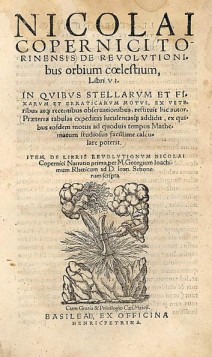
Title page of Nicolas Copernicus, De revolutionibus orbium coelestium (Basel, 1566), available at wikimedia commons (https://commons.wikimedia.org/wiki/File:De_revolutionibus_orbium_coelestium.jpg) (23 July 2015).
The conference was, as usual, a highly enjoyable mix of academic sessions, roundtables and keynotes; with a bit of time reserved for some socialising. The conference was opened by Prof. Iwan Morus on the British Association for the Advancement of Science’s meeting at Swansea in 1848. The first full day of the conference, 2 July, was packed with sessions, with five parallel panels running at simultaneously. These ranged from early-modern science to Darwinism to the development of hearing technologies by the twentieth -century British Post Office. The day was finished with the awarding of two of the societies prizes the John Pickstone prize 2014 for best scholarly book (awarded to Graeme Gooday and Stathis Arapostathis, Patently contestable: electrical technologies and inventor identities on trial in Britain (Cambridge, 2013)) and the Dingle prize for the best book on history of science accessible to a wide audience. The Dingle prize was awarded to Martin J.S. Rudwick, Earth’s deep history: how it was discovered and why it matters (Chicago & London, 2014). Rudwick’s acceptance speak was a masterclass in the public lecture. He masterfully brought the audience through the evolution of thinking on the age of the earth and the significant impacts this deepening timeframe had on our understanding of not just the earth but also of man’s existence on it and theology. If the book is half as good as the lecture it promises to be well worth the read not just for those with an interest in the history of science but anyone who wants to understand how the natural sciences impacted upon society.
The second full day of the conference brought a plethora of excellent panels on the history of science, technology and medicine. The day included a panel on Science and Religion. This contained perhaps one of the top papers at the conference, Bill Jenkins (University of Edinburgh), ‘Evangelicals and extra-terrestrials: the plurality of worlds debate in Scotland, 1815-55.’ This paper trace the impact of astronomic discovers on Scottish Evangelicals who set out to deal with the possibility of life on other worlds. These evangelicals not only accepted that life existed on other worlds but also engaged in a series of discussions that sought to understand the nature of salvation in an extra-terrestrial context. The paper also explained how these figures combined science and teleology to justify their beliefs.
Perhaps the best panel of the conference was one entitled, ‘the travelling rat, 1850-1950’ which traced the interaction and co-existence of man and his travelling companion, the rat. One very good paper on the co-existences of man and rat, by Kaori Nagai (University of Kent), look at rats as passengers on nineteenth-century ships. The paper highlighted that while rats were considered a problem, they had to be managed rather than destroyed. For example, to stop rats eating into water butts the crew had to ensure that the ships complement of rats were well watered. The highlight of the session was Neil Pemberton’s (University of Manchester) ‘From foreign invader to subterranean fiend: sewer rats, sanitary modernity and Victorian underworlds’. This highly informative and enjoyable paper highlighted the fact that rats enjoyed a status as eaters of waste in sewers and, hence, were deemed important to public health. The paper also looked at the complex relationship between man and rat once it surfaced out of the sewer. By using contemporaneous accounts of rat catchers the paper demonstrated that the relationship between man and rat in the Victorian period was much more complicated than we assume.
The conference reached a crescendo with the Presidential keynote by Greg Radick (University of Leeds). This was based on some fascinating work using the history of biology to produce a genetics course that removes the concentration on Mendel’s famous experiments with peas and inheritance. This allows the student to learn the importance that other factors, such as environment, play, alongside genes, in human development.
Further reading
Further information on the British Society for the History of Science can be found at its website: http://www.bshs.org.
For more information or to purchase Martin J.S. Rudwick’s Earth’s deep history: how it was discovered and why it matters (Chicago & London, 2014) go to: http://press.uchicago.edu/ucp/books/book/chicago/E/bo19211655.html
Bio
Adrian Kirwan, co-editor of Holinshed Revisited, is an Irish Research Council funded Ph.D. candidate at the Department of History, National University of Ireland, Maynooth. His research focuses on the interaction between society and technology, more about his research can be found here.
Review: Magna Carta exhibition British Library, London
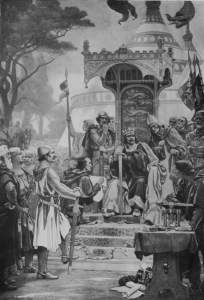
“Link John Magna Charta by Ernest Normand” by Ernest Normand – Project Gutenberg ebook of The Rise of the Democracy , by Joseph Clayton. Licensed under Public Domain via Wikimedia Commons – https://commons.wikimedia.org/wiki/File:Link_John_Magna_Charta_by_Ernest_Normand.jpg#/media/File:Link_John_Magna_Charta_by_Ernest_Normand.jpg
This year is the 800th anniversary of King John’s signing of the Magna Carta or ‘Great Charter’ of 1215. It was famously agreed to by King John of England at Runnymeade to avoid a battle with his rebellious nobles. In the document the king gave certain guarantees; the principal ones being protection for the barons from illegal imprisonment, access to justice and restrictions on payments due to the crown. While the document was annulled within a short period by Pope Innocent III, it was reissued in various forms by subsequent monarchs and has become a symbol of Citizen’s rights throughout the world.
The British Library is currently housing an impressive exhibition detailing the history of the Magna Carta. The exhibition using historical texts and audio-visual displays is quite successful at explaining the origins of the document to the visitor. In doing so it highlights the evolving relationship not only between the monarch and his most important nobles, but also their relationship to the pope and his role as a legitimising force within the hierarchical structure of the kingdom. Using various historical texts from the British Library’s extensive collections the exhibition traces the life of King John and shows contemporary perceptions of the charter.
The changing perception of the charter and what it signifies is an important element of the Magna Carta’s history. While originally a very short-lived document that sought to protect the rights of a few high-level nobles, it has been transformed over many centuries to a foundational document of human rights. The exhibition makes great efforts to highlight not only the origins of the charter but also the evolution of its various reincarnations. Great effort has been made to demonstrate its impact on the shaping of the modern world, the charter being view as one of the most significant documents in the development of citizens’ rights and the social contract. Thus, demonstrating that what we would consider to be the inalienable rights of the citizen, such as habeas corpus, were developed over a significant period of time, with individuals often using Magna Carta, however erroneously, in support of these rights.
On display is a fabulous range of texts displaying the contemporary and subsequent importance of this historical document. Most significant of these on display are two of the four surviving copies of the origin document.
Further reading:
The British Library’s website has extensive resources for those who want to find out more about the document and its history, this is available at: http://www.bl.uk/magna-carta?ns_campaign=treasures&ns_mchannel=ppc&ns_source=google&ns_linkname=Magna%20carta%20british%20library&ns_fee=0
Bio
Adrian Kirwan, co-editor of Holinshed Revisited, is an Irish Research Council funded Ph.D. candidate at the Department of History, National University of Ireland, Maynooth. His research focuses on the interaction between society and technology, more about his research can be found here.
Documentary review: Churchill – when Britain said no
BY EMMA EDWARDS
In the wake of the recent general election in Britain, criticisms of what the Conservative Party perceived as a pronounced Labour bias within the corridors of the British national broadcaster are not likely to abate with the airing of the documentary Churchill: when Britain said no. Reviewing one of the most significant electoral defeats of the twentieth century, the documentary is a conscious, though thoroughly empirical effort to de-mythologise the wartime leader. With contributions from historians such as Professors Richard Overy Richard Toye and John Charmley the documentary painstakingly accounts for the crushing defeat for Churchill and his Conservative party in 1945. It also attempts to disabuse viewers of the notion that Churchill’s wartime leadership enjoyed universal support and goodwill. Excerpts from contemporary sources such as the diaries of Lord Moran (Churchill’s personal physician), newspaper reports, interviews with members of the public and the personal correspondence of both Labour and Conservative politicians paint a more complex and less halcyon picture of the man who saw Britain through its ‘finest hour’.
Though most historians would be well aware of Churchill’s inglorious pre-war political record (as Chancellor of the Exchequer presiding over economic collapse in the 1920s) not many would question the popularity of his wartime leadership. The documentary reminds us that reactions to Churchill’s now mythic wartime orations were often mixed, with many critical and some even downright suspicious of his often slurred delivery. Indeed fewer people heard Churchill speak than is generally supposed. His famous ‘We shall fight them on the beaches’ speech of June 1940 was delivered to the House of Commons rather than broadcast via wireless. In fact Churchill did not make a recording of his oratory on this speech until nine years later, sitting in his bed in Chartwell. Professor Overy argues in the documentary that history is not only kind to Churchill because he wrote so much of it himself but also because he is ‘immensely quotable’. The documentary reminds us that throughout his life Churchill had failed to set the polls alight and became prime minister, not on the groundswell of electoral support, but through default with the resignation of Chamberlain. Churchill was clearly completely unprepared to fight an election in 1945 and was dramatically out of step with popular opinion. War had led to a new impetus of political radicalism in the working class and Churchill had failed to recognise that the war effort had already introduced a form of collectivism and socialism into everyday life. The patrician Churchill who had only been on the underground once in his lifetime was not prepared to shed his Victorian conceptions of British society to create the kind of domestic reforms sought by an increasingly vocal working class. Conservative election posters were stuck in wartime rhetoric with a portrait of an austere Churchill emblazoned with the words ‘Let him finish the job’. The Labour party meanwhile had tapped into the public mood with their posters of an amiable Clement Atlee sporting the more optimistic slogan of ‘Let’s face the future’ and recognising that a war weary public wanted an end to both wartime sacrifice and the entire economic privations of the previous decades. Churchill blundered through the election campaign, disgusting huge sections of the public by predicting that a Labour government would inaugurate a socialist ‘Gestapo’, embarrassing younger Conservatives with his diehard imperialism in the face of Gandhi’s civil disobedience movement in India and failing to impress voters with his lacklustre efforts at post-war planning.
All this and the documentary’s observation Churchill was a man of the nineteenth century trying to win a twentieth-century election contains few new or groundbreaking observations. What is interesting is its argument that there was a significant section of the working class who had never admired Churchill’s wartime leadership, never forgiving the enemy of the 1926 General Strike. While the historians featured do concede that Churchill rose to the challenge of wartime leadership, the documentary insists that the electorate’s rejection of Churchill represented a complete and utter disillusionment with the nineteenth century values for which he stood. As such the documentary itself is an incomplete effort at both political and social commentary for the reality was not such a straight line with such a neat endpoint. The documentary ends with a brief sentence acknowledging Churchill’s re-election in 1951, thus failing to explain why when Britain said such a firm ‘no’ in 1945, it was prepared to say ‘yes’ six years later.
Exhibition Review: National Museum of Ireland: The Easter Rising, Understanding 1916
BY EMMA EDWARDS
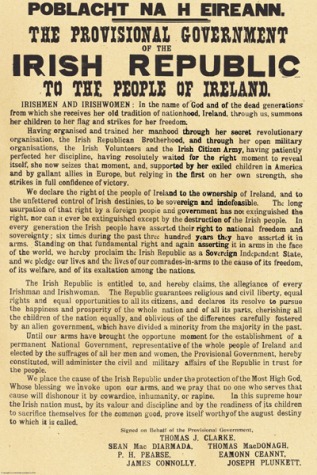
The Easter Rising: Understanding 1916 is arguably one of the most popular permanent exhibitions of the National Museum of Ireland Collins Barracks. What strikes the visitor most about the exhibition is its efforts to create a wide panorama of the origins and aftermath of the violence itself but also its self-conscious commentary on the varied interpretations of the Rising and its dominance of Ireland’s public past. Similar to RTÉ’s Road to the Rising Event in April, the exhibition carefully traces the political evolution of Ireland through the Home Rule crisis and the Dublin Lockout but also progresses to examine the aftermath of the Rising through to the War of Independence and the Civil War. As well as informative commentary boards with additional imagery, the exhibition allows plenty of space for the artefacts and the collection to tell the story. Gaelic League and GAA programmes, advertisements and propaganda reminds us of the political, social and cultural forces from which the Rising emerged. The iconography and nationalistic representations of the Rising in the years that followed successfully convey to the visitor the definitive place of the Rising in the process of independence and nation building. While an original Proclamation of the Irish Republic forms the centrepiece of the exhibition, the personal effects of the rebel leaders are its evocative heart. No history buff could fail to be intrigued by the personal effects of the incarcerated and soon to be executed readers, or failed to be enthralled by their final letters written from Kilmainham Gaol: Pádraig Pearse’s instructions for his personal effects to be conveyed to his mother; Sean Mac Diarmada’s reflections that he and his comrade’s ‘die so that the Irish nation may live’ , granted a ‘soldier’s death’ confident that ‘posterity will judge us right from the effects of our actions’.
And it is its commentary on ‘posterity’ and the impact of the Rising that elevates the exhibition into a responsible and meaningful contribution to public history. The exhibition outlines how the public memory of and academic discourse on 1916 has always been contested and often fraught with ‘opinions sometimes influenced [by] political leanings as by knowledge of the subject’. The exhibition then outlines the various commemorations and anniversaries of the Rising, illustrating how the past was inexplicably bound to the politics of the present, with post 1966 Commemorations overshadowed by the Troubles. While carefully navigating the perception of 1916, the exhibition does not shrink from insisting on the central importance of the Rising to the political development of modern Ireland. With plans to expand the exhibition in time for the centenary and with further public events anticipated, Holinshed Revisited will continue to reflect on the success of various institutions and bodies in engaging responsibly in public history. The NMI’s Understanding 1916 provides the public with an excellent place to start.
Book Review: Frank Cullen, Dublin 1847: city of the ordnance survey (Dublin, 2015).

Customs House, Dublin (1792), available at Wikimedia Commons (http://commons.wikimedia.org/wiki/File:Customs_House_Dublin_1792.jpg?uselang=en-gb)
By Adrian Kirwan
For anyone interested in Dublin city and its history this book will provide much enjoyment to both those familiar and unfamiliar with the city’s history. The book begins with an introductory chapter which provides an overview of the ordnance survey of Dublin and the social and economic context of the city’s development up to 1847. The blending of these two topics is testimony to Dr Cullen’s knowledge of both.
The rest of the book, taking the ordnance survey (O.S.) five-foot to one mile maps (1847) as its basis, is divided into forty-five sections. These focus on selected areas of the mid-nineteenth century city. Each contains the relevant extract from the five-foot O.S. map and some have one to two contemporaneous images of the area, street, square (or prominent buildings within the selected area). In addition, each section contains an accompanying text that elucidates the readers as to how and why the topographical developments on the map took place. While readers will no doubt find the map extracts and accompanying images of interest, it is the text which is the real brilliance of this work. These short –never over a page- overviews of sections of the nineteenth-century city are insightful and well written. The research and understanding of the city that this work is a product of is well hidden behind easy to read and enthralling prose. The real appeal of this book is that, due to each section being self-contained, the reader can take up the book and read at their leisure, as an individual section only takes a few minutes to read. In the same instance, the combined work provides a good introduction to the historical development of Dublin’s topography as it stood in 1847.
For example, section 13, Sackville Street, gives an overview of the development of this street as part of the work of the wide street commissioners and highlights its gradual transformation of the street from a residential to retailing district. Another get section is number 2, Blue Coat Hospital and Smithfield, which gives the reader an introduction to two Dublin institutions that have sadly disappeared since.
This is a must read for anyone with an interest in Dublin and its historical development. The easy to access book makes it very appealing to those who wish to learn about the city without having to engage with a substantial history of the city, as well as those with a particular interest in the cities topographical development.
This book is an ancillary publication of the Irish Historic Towns Atlas project and was launched in conjunction with the IHTA’s Dublin, part III, 1756 to 1847 (Dublin, 2014) by Rob Goodbody. As the atlas stops its investigation of the city’s topographical development with the ordnance survey of 1847 this accompanying publication of the city in that year is a welcome addition, providing as it does a boarder contextualisation of the topographical information contained in the atlas.
This book and indeed the entire range of IHTA publications can be purchase at: http://ria.ie/research/ihta/publications.aspx
Bio
Adrian Kirwan, co-editor of Holinshed Revisited, is an Irish Research Council funded Ph.D. candidate at the Department of History, National University of Ireland, Maynooth. His research focuses on the interaction between society and technology, more about his research can be found here.
Conference review: Irish Towns as shared European heritage, Irish Historic Towns Atlas seminar, 22 May 2015
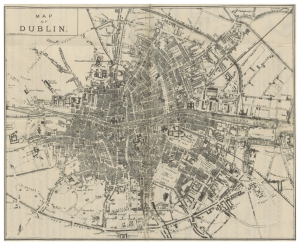
Map of Dublin, in James Dignam, Dignam’s Dublin Guide. With a handy map, etc (Dublin, 1891), available at (https://www.flickr.com/photos/britishlibrary/11209516723).
The Irish Historic Towns Atlas (IHTA) is a project of the Royal Irish Academy. It was been producing historical atlases of Irish towns since its establishment in 1981. Each atlas is produced as a separate fascicle and allows the user to trace the development of Irish towns through space and time. One of the central purposes of the atlas project is to allow for the comparative study of historic settlement. With a sufficient number of atlases completed, the IHTA has for the last number of years been holding an annual seminar to explore the utility of the project for comparative studies of historic settlement in Ireland.
The IHTA is part of a wider European project under the auspices of the International Commission for the History of Towns. This project has surveyed c. 500 European settlements in eighteen countries and represents a valuable resource for comparative studies of urban morphology. This seminar represented some of the first attempts to use atlases from Ireland and other European projects to engage in comparative study of historic settlements as a shared European experience. Thus, not only were the presenters attempting to compare various settlements but also in breaking new ground they were seeking to understand and identify the strengths and difficulties of such an undertaking.
The seminar had two main panels: ‘Medieval towns, colonisation and legacy’;and ‘Transformation in 18th and 19th century towns’. Each presentation used an Irish and European town to engage in a comparative study of urban development through space and time. A fine example of this was Mark Hennessy’s (TCD) presentation: ‘Kilkenny and Lviv: comparative perspectives’. Using the historic town atlases as the bases of his talk, he discussed developments in the urban environment within a broader political, social and economic context to highlight the factors driving urban development in each city and to explain the similarities and differences that these experienced. The two main panels were followed by a plenary session by Michael Conzen who provided an elucidating and informative discuss of the comparative study of urban morphology.
The conference was quite successful not only in producing some insightful studies of the idea of urban areas as a shared heritage but also highlighted some of the benefits and drawbacks of the atlases as a tool for such studies. While differences between and limitations in the various atlases were discussed, the conference very ably demonstrated that the wider European atlas project is a very useful resource for such studies. One hopes that this is the start of a very rewarding series of seminars that will further explore this topic and in doing so display another important use for the excellent work that is being done by the IHTA.
Further reading:
The IHTA has produce a series of books aimed at those seeking to understand both the atlases and the wide range of uses to which they can be put, these are :
Jacinta Prunty and H.B. Clarke, Reading the maps: a guide to the Irish Historic Towns Atlas (Dublin, 2011).
H.B. Clarke and Sarah Gearty, Maps & Texts: Exploring the Irish Historic Towns Atlas (Dublin, 2012).
There have also been a number of atlases produced, these can be view and purchased at:
http://ria.ie/Research/IHTA/Publications.aspx
Bio
Adrian James Kirwan, co-editor of Holinshed Revisited, is an Irish Research Council funded Ph.D. candidate at the Department of History, National University of Ireland, Maynooth. His research focuses on the interaction between society and technology, more about his research can be found here.
T.V. review: Enigma De Blaghd: Ernest Blythe
By David Gahan.
The TG4 documentary Enigma De Blaghd screened on Thursday 16 April provided a revealing insight into Ernest Blythe, a man who played an important role in the foundation of the state and was very influential in its early years, but one who is not widely known, except for being the minister responsible for cutting the old age pension.
In giving an outline of Blythe’s life the programme tried to explore some of the reasons for his lack of prominence today. He was a founding member of Cumann na nGaedheal and Fine Gael and the only Protestant from the six counties to serve as a minister in independent Ireland.
He came from a Unionist background, was born in 1889 at Magheragall, Lisburn. In his early years he became aware of the United Irishmen through his mother’s Presbyterian background. He moved to Dublin in 1905 for work with the Department of Agriculture. He joined the Gaelic League and met Seán O Casey. At his prompting he subsequently joined the Irish Republican Brotherhood (IRB) and later became an organiser for them in the North while ironically working at a Unionist newspaper, the North Down Herald. He did not take part in the 1916 Easter Rising as he had been arrested in March. Blythe’s rank within the Volunteers was examined and it was pointed out that he would have taken part, and probably been in what was termed the second tier leadership, which would have meant imprisonment after the Rising and possibly even a sentence of execution commuted to a prison term as happened others of similar standing. An article ‘Ruthless Warfare’ in 1918 in opposition to conscription showed Blythe’s preparedness to use violence and also brought him more to the attention of the volunteer leadership. He was appointed minister for Trade and Commerce by de Valera in the first Dáil. He had been elected MP for Monaghan North in the 1918 General Election. Blythe supported the Treaty and was part of a committee which recommended that they recognise and not seek to undermine the Northern State, this proposal, which was critical and at variance with Collins view on the North, was implemented in August 1922. He voted for the execution of prisoners during the Civil War which caused some to dislike him, but he defended his decision in later life believing it was necessary.
As Minister for Finance from 1923-32, Blythe believed in reducing government spending and did so by £10 million from 1923-25; contained in this was the cut of one shilling from the old age pension, for which he was most remembered. Spending cuts continued at a time of widespread poverty in Ireland; four members of one family died of hunger related disease in Cork in March 1927. After the assassination of Kevin O’ Higgins he was appointed vice-president of the executive council of the Free State. When Cumann na nGaedheal were defeated in the 1932 election, Blythe became involved in the Army Comrades Association (ACA) and was the first member of Cosgrave’s government to support the Blueshirts, and when these two merged with the Centre Party to form Fine Gael in 1933, with Eoin O’Duffy as leader, he was appointed to its executive. He later helped to oust O’Duffy from his position. He lost his Dáil seat in 1933.He would not serve as a minister or TD again, but he continued to comment on political issues, one of the more notable being his response to an anti-partition publicity campaign, in a book Briseadh na teorann, (Smashing the border) in which he differed from broad nationalist opinion. He was managing director of the Abbey theatre from 1941-67. He died in February 1975.
The programme carefully examined many aspects of Blythe’s political life, stressing the importance he placed on the Irish language in the make-up of nationalism, his cuts in public spending which he believed necessary, though some questioned his foresight as to the consequences and a lack of feeling for those bearing the brunt of these cuts. While best remembered for the old age pension cut, arguably his most significant action was his role in reshaping the government policy on the North, not only adopted by the government of which he was a member, but by successive Irish governments since, demonstrating his lasting influence.
TG4: Enigma De Blaghd
Further reading: Patrick Buckley ‘Ernest Blythe’ in James McGuire, James Quinn (eds), The Dictionary of Irish Biography (Cambridge, 2009), available at (dib.cambridge.org) (23, April 2015)
A short history of the Hubble Space Telescope: 25 years of wonder

Eagle Nebula as seen from the Hubble Space Telescope, available at Wikimedia Commons (https://commons.wikimedia.org/wiki/Category:Hubble_images_of_nebulae#/media/File:Eagle_nebula_pillars.jpg) (28 April 2015).
2015 marks the twenty-fifth anniversary of the Hubble telescope, named after the American astronomer Edwin Hubble (1889-1953). Astronomers had been well aware that the earth’s atmosphere distorts light coming from stars and nebulae since early in the science’s development. Early astronomers, relying on hand-drawn images to relay their discoveries resorted to multiple observations of astronomical phenomenon in order to produce a reliable image. However this technique could still produce errors, in part due to the observer(s) imaging things they wished were there (or not seeing things that were). This was help by the development of photography in the nineteenth century. It would be many decades before the exposure time was short enough to allow for its use in astronomy but even then this technology had to negotiate with atmospheric interference. Following the Second World War the idea of a space-based telescope began to gain traction. Obviously, such ideas were aided by the development of rockets during that conflict.

Horsehead Nebula as seen from the Hubble Space Telescope, available at Wikimedia Commons (https://commons.wikimedia.org/wiki/File:Horsehead-Hubble.jpg) (28 April 2015)
First promoted by Lyman Spitzer, such a telescope would not only avoid the distortion of the earth’s atmosphere but also allow for the observation of x-rays, which are blocked by the atmosphere, from distance objects. Spitzer was to go on to head the National Academy of Science’s committee on the Large Space Telescope which held its first meeting in 1966, just three years prior to the first landing on the moon. Thus the genesis of a large space-based telescope must be understood in the context of the space race and, hence, the cold war.

Hubble Space Telescope in orbit, available at Wikimedia Commons (https://commons.wikimedia.org/wiki/Hubble_Space_Telescope#/media/File:Hubble_01.jpg) (28 April 2015)
The task of launching such a telescope into space had been studied by Wernher von Braun at the Marshall Space center in the 1960s. Von Braun had been a member of the German rocket society in the 1920s and received his Ph.D. while developing missiles for the German army. As well being famous as one of NASA’s foremost rocket engineers (developing the Saturn rocket) he also led the team’s which constructed the American Jupiter ballistic missile and, during the Second World War, developed the German V-2 rocket. This demonstrates the strong connection between German military rocket engineering and subsequent developments in American military and space rockets.
The feasibility of a large space-based telescope was significantly improved with the development of the Space Shuttle program from the 1960s. This would not only provide a platform with which to launch such a telescope but would also allow for periodic maintenance and repair of the apparatus. In 1971 NASA approved feasibility studies for a large-space telescope. This was followed by attempts to secure federal funding. However, at an estimated cost of $400-$500 million these proved difficult acquire. The only hope for the telescope would be a reduction in price. The substitution of the proposed 3 meter mirror to one measuring 2.4 meters brought the projected cost down to c. $200 million. With this the project secure partial funding from the European Space Research Organisation (now the European Space Agency) in 1975 and the rest of the funds were approved by congress in 1977.

Launch of the Hubble Space Telescope, available at Wikimedia Commons (https://commons.wikimedia.org/wiki/Hubble_Space_Telescope#/media/File:1990_s31_IMAX_view_of_HST_release.jpg) (28 April 2014).
The original launch in 1986 was aborted due to the loss of the Space Shuttle Challenger and the telescope would not enter orbit until 1990. Astronomers quickly noticed distortions in the images from the telescope due to a fault in its primary mirror. This was repaired during the telescopes first service mission in 1993 and the telescope has been astonishing the world since. However the faith of the telescope is as tied to the space shuttle program now as it was during its conception. With the end of that program there is no platform available to service Hubble and it will eventually fall into disrepair.
Further reading
A Brief History of the Hubble Space Telescope, available at National Aeronautics and Space Administration, NASA history division (http://history.nasa.gov/hubble/) (24 April 2015).
Dr. Wernher von Braun, available at Marshall Space Flight Center, MSFC History Office (http://history.msfc.nasa.gov/vonbraun/bio.html) (24 April 2015).
Bio
Adrian Kirwan, co-editor of Holinshed Revisited, is an Irish Research Council funded Ph.D. candidate at the Department of History, National University of Ireland, Maynooth. His research focuses on the interaction between society and technology, more about his research can be found here.
Review event: RTÉ Road to the Rising
BY EMMA EDWARDS
How we choose to commemorate historical events can provoke both impassioned debate and cynical dismissal. If a sense of occasion is lacking or if balance, accuracy and nuance is completely shed in favour of emotive myth making then the event has failed to serve as a commemoration: an act of remembrance implies that the memory is rooted in a factual reality that has been faithfully recorded. The 1916 Rising represents both the real military battleground and the later polemical battleground of interpretation between nationalists and historians of different motivations and hues. As we head towards the centenary it is reasonable to expect that debate will deepen but we can hope that differing forums can accommodate and acknowledge the competing interpretations and by doing so create a broader understanding and appreciation of the implications of 1916 for Irish history.
One of the first events to wet the public’s appetite for the centenary was RTÉ’s Road to the Rising, a public event, inviting people to ‘step into history’ on a pedestrianised O’Connell Street (or Sackville Street as it was fondly referred to for the occasion). This was a very impressive affair, encompassing academic talks, broadcasts and exhibits. It was an entertaining and commendable effort to contextualise the Rising for the public, giving attendees the opportunity to immerse themselves in recreated scenes of Dublin life in Easter 1915. There were music hall acts showcasing material popular in the period, stalls displaying period wares (including tailors, milliners and a barbershop), a period wedding and funeral with Liberty Hall hosting a broadcast of Insurrection, the documentary made by RTÉ for the 50th anniversary of the Rising. RTÉ also provided access to sound booths for the recording of family history and genealogists, Dublin Public Libraries and an army of actors and volunteers worked hard to ensure public engagement with events. Talks from historians and authors on such diverse topics as wives, mothers and revolutionaries, the twilight of empire, law and order in Ireland, the Irish language and the cultural revolution, family members of the volunteers, living and dying in 1915 and ordinary life in 1915, acknowledged the broad vagaries of Irish politics and society in the lead up to Easter 1916.
The efforts of all those involved in Monday’s public history event has set an inclusive and stimulating tone for the coming centenary commemorations which will hopefully continue to provide an opportunity for wider historical engagement and debate.
An 8th century cure for snake-bites
Several news organisations recently ran a story telling of scientists from the University of Nottingham who recreated a medieval ‘eye salve’ by using a recipe found in the Medicinale Angilicum or Bald’s Leech book as it is sometimes known. This manuscript is a 9th century Anglo-Saxon medical text which describes a whole series of medicinal remedies for various ailments. What was remarkable and indeed newsworthy was that when this ‘eye salve’ was tested it proved to be remarkably effective against MRSA, a superbug resistant to methicillin resistant antibiotics.
This led me to think about which other medieval remedies might warrant further investigation. One I think that has been overlooked or perhaps forgotten is Bede’s cure for snake-bites. The Venerable Bede is not widely known for his interest in medicine. Bede was a monk, a theologian and historian born in Northumbria in the early 670s who lived to the year 735. He spent most of his life in the monastery of Jarrow where he became a prolific writer. Much of his writing is on theology and religious history but he also tackled subjects as diverse as language and the computation of time and chronology (this was of particular importance to early medieval Christians who were keen to conclusively fix a date for Easter).
It is in his Historia ecclesiastica gentis Anglorum 731 (The Eccesiastical History of the English People) that we rather surprisingly find a cure for snake-bites. Here Bede tells us that,
‘in the case of people suffering from snake-bite, the leaves of manuscripts from Ireland were scraped, and the scrapings put in water and given to the sufferer to drink.’
Once this remedy has been taken,
‘These scrapings absorbed the whole violence of the spreading poison and assuaged the swelling’
So it seems that it is the scrapings of Irish manuscripts that are the key to this treatment. Bede’s remedy does follow a certain logic. For he also tells us that in Ireland there are no reptiles to be found and serpents can’t survive there (St. Patricks association with snakes wasn’t to appear till the 11th century). He then intriguingly adds that,
‘although serpents have often been sent from Britain, as soon as the ship approaches land they are affected by the scent of the air and quickly perish’
One wonders why snakes would be a common cargo on boats crossing the Irish Sea? As well as the fact that the scent of Irish air can kill snakes he also states that,
‘In fact almost everything that the island produces is efficacious against poison’
Considering that the only manuscripts finding their way across the sea from Ireland would in all likelihood have been of a religious nature this might have made them seem doubly potent against snake or serpent venom. This I feel all clearly warrant further investigation in light of the University of Nottingham findings. I propose to first find a snake (this might prove difficult being based in Ireland), then a willing volunteer and finally a medieval Irish manuscript (Maynooth University has a limited selection but TCD will surely loan one for such sound scientific research).
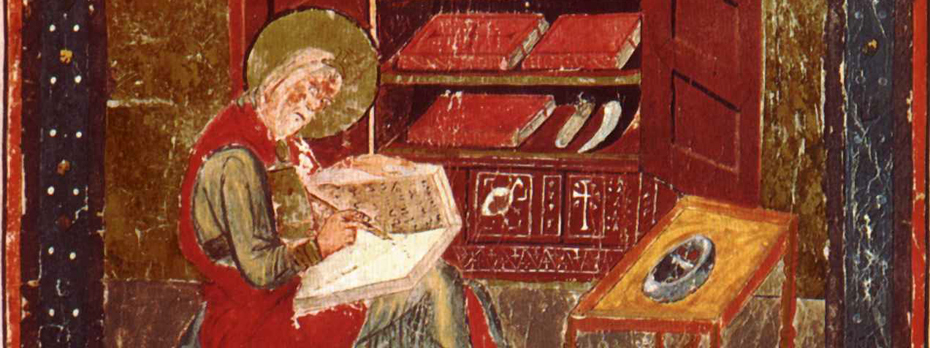
Further Reading:
Bede, The Ecclesiastical History of the English People, Judith McClure and Roger Collins (eds) (Oxford, 1988)
Irish History Student’s Association: Conference Review
The annual conference of the Irish History Student’s Association took place in the University of Limerick between 13-14 March. The IHSA was founded in 1950 to promote the study of history among students in third level institutions on the island of Ireland. The IHSA has served Irish history students for decades and has allowed them to experience the world of academic conferences in an open and helpful manner.
The conference provided many quality papers, too numerous to review in this blog. During a panel titled ‘conflict in the wider world’ there was a very informative paper on ‘The Red Power Movement: a symbol of Indian Resistance and native political action’ by Katya Radovanova (T U Dresden) from Bulgaria and currently an Erasmus student in NUI Galway. It examined the nationwide campaign of Native Americans to reclaim the tribal right to sovereignty and self-determination during the late 1960’s and early 1970’s which became known as Red Power. In the years prior to this there had been a growing interest in culture and language and Red Power proved a turning point because it made an issue of neglected treaties and assimilation policies. Dónal Brennan (UL) gave an informed paper on the historical development of counter-insurgency and the Western view that it was reliant upon professional soldiers similar in vain to ‘Lawrence of Arabia’ and how this was applied in subsequent conflicts. Cian Moran (NUIG) gave an interesting paper on the issue of humanitarian intervention in the case of the 1978 Uganda-Tanzania War. It gave a detailed description of Uganda under Idi Amin, their attempt to annex Tanzanian territory, the repelling of this attack and Tanzania’s subsequent invasion of Uganda and overthrow of Amin and that this was humanitarian intervention in all but name.
At an afternoon panel titled ‘Parliamentary Ireland’, the role of the Irish National League in the Free State was examined in an excellent paper by Martin O’Donoghue. He outlined its formation by two former Irish Party MPs, Captain William Redmond and Thomas O’Donnell and how it sought a rejection of the treatyite political duopoly. The paper examined the question of whether the party was a legacy party as it drew on the symbolism, personnel and support networks of the Irish Party. The party failed to secure a political niche for itself and after a successful election in June 1927, when it returned eight TDs, got involved in an unsuccessful attempt to form a coalition with Labour and Fianna Fáil, which weakened its support base and saw it retain only two seats at the September 1927 election. An interesting paper was delivered by John Phayer (Independent) on the establishment of the United Irish League in 1898, and the controversy surrounding the imprisonment of its former honorary secretary, Samuel Phayer-Harris. The impact of evictions in the Limerick area was examined; Phayer-Harris’s attempts to stop these evictions and also analysis of his trial at Newcastlewest court and time in Tralee jail.
At one of the concluding panels titled ‘conflict and law’, Anne Marie McInerney gave a detailed paper on ‘prison riots, escapes and hunger strikes during the Irish Civil War’. She explained differences from the British policy and how internment was now initiated by those who had themselves been interned, and hence had a good understanding of the prisoner’s mindset. An escape from Newbridge was outlined and how the hunger strikes of 1923 evoked a different reaction from the church, compared to the strike of Terence MacSwiney in 1920. Matthew X. Calvert gave a paper on ‘the early Irish outlaw: of brigands and heroes’ in which he drew on law tracts of early Ireland where descriptions of those deemed unfit to live within society are contained. He also used examples of outlaws found in early Irish literature.
At the section after lunch Dr Sarah-Anne Buckley spoke of the importance and relevance of the IHSA and outlined some of the aims and plans for the society’s future and Dr John Logan (former head of history at UL) gave a brief talk about some previous conferences. Next year’s conference will be held in NUI Galway.
Bio: David Gahan
My main research is in political and socio-economic developments in twentieth century Ireland and the wider world. I attained a BA in History and English in 2012 from St. Patricks College, Drumcondra. I am currently a PhD student at the Department of History, at NUI Maynooth. My thesis which is being supervised by Prof. Terence Dooley, examines the agitation around the land annuities issue 1926-32. It aims to look at the economic effect of annuities on farmers and the effect on political developments, particularly the positions adopted by the various political parties and how this impacted in the wider Irish political context.
George Boole’s life and legacy
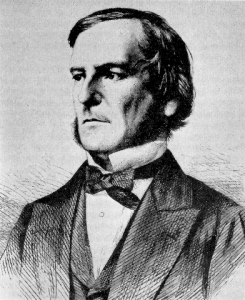
George Boole, c. 1860, available at Wikimeda Commons (http://commons.wikimedia.org/wiki/File:George_Boole.jpg?uselang=en-gb) (6 Mar. 2015).
2015 marks the bicentenary of the birth of George Boole who made significant contributions to a form of mathematics that is essential today for the operation of the internet. Boole was born in 1815 to John Boole (a cobbler) and his wife Mary. Despite the basic education that Boole received he was encouraged by his father, who was active in the local mechanics’ institute, to advance his learning. He would go on to teach himself classical and modern languages; in addition, he took a keen interest in science, particularly optics. Using these skills Boole was to spend his early adulthood teaching in various English schools.
In 1831 Boole began the study of advance mathematics, aided by his friendship with Sir Edward Bromhead (who had studied mathematics at Cambridge). Boole was to excel at mathematics and between 1841 and 1845 was to publish twelve mathematical papers, receiving a Royal Medal of the Royal Society of London for his work.
In 1845 the Colleges (Ireland) Bill was passed providing public funds for the establishment of colleges in Ireland. Boole, encouraged by the future Lord Kelvin, William Thompson, applied for a position as Professor of Mathematics at one of the new institutions. Boole was elected to that position at Queen’s College Cork (now University College Cork, UCC) in 1849. It was here that Boole was to make some of his most significant contributions to mathematics. At the centre of his new study was an attempt to construct a science of logic based on mathematical equations. His 1854 book, An investigation of the laws of thought on which are founded the mathematical theories of logic and probability, was a major contribution to the algebra of logic. This was to form the bases of Boole’s work for the rest of his life. This work was to focus on the differential operators and, thus, had a strong influence on Boole’s contributions to logic.
For his contributions to mathematics Boole was awarded honorary degrees from Dublin, and Oxford Universities; he was also elected a Fellow of the Royal Society in 1857. At the heart of logic is the need to determine whether a statement is true or false, thus, Boole’s attempts to use algebra to solve logical problems produced a binary form of mathematic equation. While contemporaries had a wide range of views on the success and originality of Boole’s work, it was to become famous in the twentieth century when an abstract Boolean algebra was developed and -with its binary bases- was to prove one of the best methods to study digital circuits. Thus when using the advance search function on an internet search engine -otherwise known as the Boolean operators- remember that the computer is using mathematics first developed in the nineteenth century. If one ever needed an argument for the utility and necessarily of blue-sky research this is surely one of them.
UCC are having a series of events to mark the bicentenary of Boole’s birth and his contributions to mathematics, more information can be found at the website George Boole (http://georgeboole.com/).
Further reading
Grattan-Guinness, ‘Boole, George (1815–1864)’, in Lawrence Goldman (ed.), Oxford Dictionary of National Biography (Oxford, 2004), available at (www.oxforddnb.com) (6 March)
Roderick Gow, ‘George Boole’ in James McGuire, James Quinn (eds), The Dictionary of Irish Biography (Cambridge, 2009), available at (dib.cambridge.org) (6 Mar. 2015).
Bio
Adrian Kirwan, co-editor of Holinshed Revisited, is an Irish Research Council funded Ph.D. candidate at the Department of History, National University of Ireland, Maynooth. His research focuses on the interaction between society and technology, more about his research can be found here.
Kilcoole Gunrunning 1914
By David Gahan.
The village of Kilcoole in north Wicklow involved itself in the decade of commemorations by remembering a significant though not widely known event, the Kilcoole Gunrunning of August 1914. In 2013 the Kilcoole Heritage Group was formed to commemorate the gunrunning, and their efforts culminated in a programme of events, leading up to and centring on the weekend of 26/27 July 2014 to relive the happenings in Kilcoole one hundred years ago.
The historical context surrounding the gunrunning lies in the Home Rule crises of 1914. The bill granting Home Rule for Ireland had been passed in the Commons in 1912, and could now only be delayed for a further two years by the House of Lords, meaning that it was due to come into being in 1914. The Ulster Volunteer Force (UVF) had been formed in January 1913 to resist Home Rule in Ulster; the Irish Volunteers had been formed in November 1913 to defend its implementation. When the UVF landed arms at Larne, Donaghadee and Bangor in April 1914, it heightened the need for the Irish Volunteers to arm.
Kilcoole was chosen because of a blind spot on the beach which coastguards could not see from Greystones (north) and Newcastle (south); the choice was most probably influenced by Kilcoole native and leading IRB member Robert Monteith. The operation was funded by wealthy donors and the American based Clan na Gael. Darrel Figgis purchased 1,500 Prussian rifles and 45,000 rounds of ammunition from the Moritz Magnus firm in Hamburg. The weaponry was moved from a Liege warehouse to Hamburg and then transhipped to two yachts, the Asgard and Kelpie, owned by Erskine Childers and Conor O’ Brien respectively, near the Ruytingen lightship off the Scheldt, Belgium on 12 July. The Asgard landed its cargo at Howth on 26 July in broad daylight, supervised by Bulmer Hobson aided by a large party of volunteers and Na Fianna Éireann. The Kilcoole landing was originally planned for the night of 25 July; the Chotah owned by Sir Thomas Myles was engaged to bring the guns to Kilcoole owing to the fact that it had an engine which could time its arrival more accurately and because of security issues surrounding the Kelpie. But adverse weather conditions caused a delay in the transhipment to the Chotah off Bardsey Island in the Irish Sea and the Kilcoole landing was put back till 1/2 August.
On 1 August volunteers from Dublin posing as tourists went to Kilmacanoge and after dark to Kilcoole. Fianna Éireann under the command of Liam Mellows acted as look-outs. Two RIC men, Dalton and Webb who were patrolling the beach were locked up along with the station master. Seán Fitzgibbon supervised the landing of the guns in the early hours of 2 August. Local volunteer William Foley used his horse and dray to move the cargo from the beach to where they were loaded on to cars. Seán T. O’Kelly and Mellows organised the transport of the arms to secure Dublin locations. One of the last cars to leave, a charabanc, heavily loaded broke down in Bray, but after some time other cars arrived from Dublin to take the cargo. Many leading volunteers were in Kilcoole that night including Hobson, Thomas McDonagh and Eamon Ceannt.
The Kilcoole Heritage group organised a programme of events, which included historical talks in the weeks preceding the commemoration festival. The weekend highlight was a parade, with people in period dress, led by an army band to the beach, where a re-enactment of the landing took place. There was a Kilcoole historical maps display, an old photo exhibition by local photographer Chris Dobson and a gunrunning pictorial by Michael Kunz in the local St. Patricks Hall over the weekend. On Sunday the Main Street was closed off and various traditional heritage demonstrations took place including blacksmith, pottery throwing, hurley making, wool spinning and wood turning. There was a food market, traditional children’s games and Irish dancing. All shop fronts displayed old photos and images of the past.
The weekend certainly brought history to life, and remembered an event long overshadowed by the more dramatic events at Howth, but which rightly takes its place in the decade of centenary commemorations.
Further Reading:
Martin, F. X. (ed), The Howth Gunrunning and the Kilcoole Gunrunning: recollections and documents. (Dublin, 2014)
Kilcoole Heritage Group, Forgotten History: The Kilcoole Gunrunning (Greystones, 2014)
Bio:
My main research is in political and socio-economic developments in twentieth century Ireland and the wider world. I have a BA in History and English from 2012, from St. Patricks College, Drumcondra. I am currently a PhD student at the Department of History at NUI Maynooth. My thesis which is being supervised by Prof. Terence Dooley, examines the agitation surrounding the land annuities 1926-32. It aims to look at the economic effect of annuities on farmers and on political developments, particularly the positions adopted by the various political parties and how this impacted on the wider Irish political context.
Book review: Doris Kearns Goodwin: Team of rivals: the political genius of Abraham Lincoln (New York, 2005)
When historian Doris Kearns Goodwin was asked why she undertook to produce a biography of perhaps the most documented political figure in American history, she cited the explanation offered by twentieth century writer Ida Tarbell. According to Tarbell, researchers like to spend so much time with Lincoln because he was so ‘companionable’. What sets Team of rivals apart is this acknowledgement of Lincoln as a being whose political legacy was predicated on his ability to forge working relationships with old adversaries to help preserve and then repair a disintegrating Union. This study offers a refreshing depth of focus on the careers of Lincoln’s peers, with Goodwin convincingly demonstrating that Lincoln’s political success was less determined by his own talents and ego, which could be matched by many of his contemporaries, than by his genius for handling the talents and egos of others. This book is really a collection of biographies of the many politicians who opposed and worked with Lincoln, their contributions to the age in which they lived and the foundations each of them built for the many changes that were effected during the Lincoln administration. In this Goodwin is replicating a successful formula from her Pulitzer prize-winning study of the personalities of the F.D.R. administration- No ordinary time: Franklin and Eleanor Roosevelt: The home front in World War II.
Team of rivals chronicles how Lincoln, the epitome of what a self-educated man could achieve in a more fluid nineteenth century mid-western society, relied on his folksy homespun style to both charm allies and disarm adversaries, lulling them into a false and often fatal sense of superiority over the former labourer. As a former Illinois congressman who returned to practise as ‘prairie lawyer’ having served briefly in the U.S. House of Representatives, Lincoln’s career was certainly less starry than those of his three main rivals for the 1860 Republican Presidential nomination: William H. Seward, Salmon P. Chase and Edward Bates. However Goodwin painstakingly documents how Lincoln positioned himself for success by securing the commitment from Republican delegates that he would be their second choice for nomination. As there was greater division between the supporters of Seward, Chase and Bates, who reflected different interests and wings of the Republican party, Lincoln emerged as the acceptable compromise candidate, who expressed himself with greater moderation on the burning political issues of the day. Lincoln’s bold step of constructing a cabinet of rivals is chronicled with Goodwin using extensive primary source material to illustrate how Lincoln’s wartime cabinet initially expected to be able to manipulate and pull the strings of the sixteenth president only to ultimately grow to respect and even revere Lincoln’s judgement. Goodwin shows how Lincoln managed to exact rivalry from many (but not entirely all) of his former rivals by astonishing his often wayward cabinet members with his insistence on taking full and public responsibility for their often disastrous missteps.
What is most satisfying about this book of biographies is that Goodwin allows the primary material to take centre stage and speak for itself. The vast collections of letters, diaries, newspaper articles, government reports, memoranda etc., featured in the book serve to remind us that the politics of Civil War era American was driven by the clash of both the political convictions and the personalities of the people who produced them. An impressive piece of wide-ranging scholarship that provides an new perspective on Lincoln’s shrewd political acumen and most of all, his stage management skills to create a more rounded, nuanced and honest biography of Honest Abe and the people who shaped his presidency.
Resources for Historians: Maynooth Research Guides in Local History

Maynooth Castle in 1885, available at Wikimedia Commons (http://commons.wikimedia.org/wiki/File:Maynooth_Castle_1885.jpg) (accessed 6 Feb. 2015).
This month’s ‘Resources for Historians’ is a change from our usual review of useful websites. Instead the resource under scrutiny is a series of publications whose purpose is to guide readers through various source materials that would be of potential use to historians. While the series title points out that these are primarily geared toward local history there is much in the series that is of use to the study of a wide range of subjects.
The books follow a set format with the first chapter giving an introduction to the context of the sources’ creation and the uses to which they were put. This chapter is in essence a history of the sources. This gives the historian an insight into the available sources and the limitations imposed by their creation. This is followed by a chapter on accessing the sources, providing an overview of the various archives that hold the material under investigation and how to access them. The final chapter normally provides hints as to the potential uses to which the sources under investigation can be used. The books are normally finished with appendices that give an overview of the resources that are available.
An example of the material covered by these books is Jacinta Prunty’s Maps and map-making in local history (Disclaimer Jacinta Prunty is the author’s Ph.D. supervisor). The book provides an introduction to the world of maps and provides the reader with the essential knowledge needed to read, understand and use maps as historical sources. It guides the reader through the nature of maps, the manner of their creation with particular reference to map-making in Ireland. The book then provides all the information needed to locate and assess the main body of maps needed for a local or national study of Ireland.
Other very useful guides in the series are C.J. Woods, Travellers’ accounts as source material for Irish historians; in addition to an introduction the book has annotations of over 200 accounts and a bibliography. Indexes of travellers and places at the end of the book allow the reader to trace either individual travellers or allow one to enquire into any traveller accounts of a particular area. The same format is seen in Raymond Refausse’s, Church of Ireland records which provides a guide to published catalogues, editions of archives and manuscripts of the Church of Ireland as well as a guide to the main repositories for Church of Ireland records (a second edition of this book was published in 2006).
Other books in the series include Business archival sources for the local historian; A guide to sources for the history of Irish education, 1780-1922; Medieval Gaelic sources; The big houses and landed estates of Ireland: a research guide; Exploring the history and heritage of Irish landscapes; Sources for the study of crime in Ireland, 1801-1921; A guide to Irish military heritage; Counting the people: a survey of the Irish censuses, 1813-1911; Medieval record sources, Pre-census sources for Irish demography.
These guides are a highly recommended starting point for students, amateur historians or even experienced historians who are seeking to expand and understand the range of potential resources that are available to them.
Further reading:
See the complete series of Maynooth Research Guides in Local History available at Four Courts Press:
Adrian Kirwan, co-editor of Holinshed Revisited, is an Irish Research Council funded Ph.D. candidate at the Department of History, National University of Ireland, Maynooth. His research focuses on the interaction between society and technology, more about his research can be found here.
Tercentenary of the birth of first Methodist preacher in Ireland
Last month marked the 300th anniversary of the birth of George Whitefield (1714-1770), the mid-eighteenth-century preacher who introduced Methodism into Ireland. While John Wesley’s 21 visits between 1747 and 1789 drove the growth of Irish Methodism in these early decades, Whitefield’s arrival in 1738 marked the beginning of the Methodist mission to the Irish.
Whitefield was a member of the Oxford ‘Holy Club’, an informal gathering of early evangelists among the Oxford student body, centred on Wesley and his brother Charles. The activities of the ‘Holy Club’ included prayer meetings and Bible reading sessions, as well as the provision of assistance to the elderly and sick. When the Wesleys departed for Georgia in the British Colonies circa 1736, Whitefield assumed the leadership of the ‘Holy Club’. His later theological disputes with Wesley (on the subject of predestination) created a rift, from which Whitefield established Calvinist Methodism, which was particularly popular in Wales and throughout America.
As with Wesley, Whitefield was an Anglican clergyman who spearheaded a transatlantic religious revival; indeed, in this period Whitefield was among the most well-known figures in America. They enjoyed camaraderie in the early years of their evangelising careers. Indeed, Wesley’s system of itinerant field-preaching, which became a characteristic of early Methodism, was based on the successful modern deployed by Whitefield. By removing the service and sermon from the (Established) church to fields and highways, and by encouraging revival and ‘enthusiasm’ among the laity, this generation of itinerant preachers was perceived as a threat to the Established Church. Their practices were seen as unbecoming of a man of God, and this sentiment was captured in Wesley’s journal entry recording his first foray into field preaching at Bristol, inspired by Whitefield: ‘At four in the afternoon I submitted to “be more vile”, and proclaimed in the highways the glad tidings of salvation, speaking from a little eminence in a ground adjoining to the city, to about three thousand people.’
Whitefield’s diary of his visit to County Clare in 1738 reveals much of interest. Firstly, his account mirrors those of other travellers to Ireland in this period in commenting on the extraordinary poverty of the people: ‘As I rode along, and observed the meanness of the poor people’s living in these parts, I said, if my parishioners at Georgia complain to me of hardships, I must tell them how the Irish live; for their habitations are far more despicable, and their living as hard, I believe, as to food; and yet, no doubt, content dwells in many of these low huts.’ More significantly, Whitefield was an early proponent of missionary strategies deployed by evangelicals around the turn of the nineteenth century – namely, the use of the Irish language as a means of effectively communicating with the impoverished Irish peasantry (‘I can think of no likelier means to convert them from their erroneous principles, than to get the Bible translated into their own native language, to have it put in their houses’) and the establishment of ‘charity schools erected for their children’.
Further reading:
Boyd Stanley Schlenther, ‘Whitefield, George’ in Oxford Dictionary of National Biography (Oxford, 2004).
For more on Whitefield, see the dedicated section on the University of Manchester Rylands Library’s website:
Museum of the Month: Science Museum, London.
The Science Museum, London, was founded in 1857 as part of the South Kensington Museum, becoming an independent entity in 1909. Its foundation can be traced back to the Great Exhibition of 1851; this generated both the interest and money needed to found the museum. From early in the museum’s existence it was acquiring items of interest to the history of science and technology, including an early Boulton and Watt beam engine and Stephenson’s revolutionary locomotive ‘Rocket’.
Spread over a number of floors the Science Museum is divided into galleries which focus on different aspects of the history of science, technology and medicine. These include ‘Glimpses of Medical History’, ‘The Science and Art of Medicine’ and ‘Making the Modern World’. The displays vary in their focus with some concentrating on the historical collections and providing context to their creation and use while others are more concerned with the museum’s other central aim: the education and promotion of the sciences. Therefore while some displays are concerned with the preservation and contextualisation of the museum’s vast collection of historical scientific, technological and medical instruments and objects, other displays are much more interactive. These displays are more concerned with engaging and entertaining the museums younger visitors. The amount of children who were at the museum, and enjoying the experience, was definitely a defining feature.
An example of the many displays on offer is the new ‘Information Age’ gallery. This gallery traces the development of telecommunications technology with displays ranging from one of the first Cooke and Wheatstone five-needle telegraphs to satellites (in this case a real satellite rather than a replicate). Not only is there an amazing range of unique and rare telecommunication apparatus but the gallery is very successful in contextualising their development, use and the impact that these technologies had on society. A highlight is inclusion of the NeXT computer which Tim Berners-Lee used in the 1980s to develop the World Wide Web; for a brief moment in time this computer was the only server in operation and therefore it was the World Wide Web. The gallery uses multiple methods to engage the public including written panels accompanying displays, audio-visual, interactive computer panels and the availability of good, old-fashion guides to expand the visitor’s knowledge and understanding of the role that telecommunications played in the development of the modern world. The ‘Information Age’ gallery has an accompanying website which can be found at http://www.sciencemuseum.org.uk/online_science/explore_our_collections/information_age.
Entry to the museum is free and it is well serviced by the tube and bus routes. Several other museums are also located in the immediate area. More information can be found on the Science Museum’s website http://www.sciencemuseum.org.uk/home.aspx.
Adrian Kirwan, co-editor of Holinshed Revisited, is an Irish Research Council funded Ph.D. candidate at the Department of History, National University of Ireland, Maynooth. His research focuses on the interaction between society and technology, more about his research can be found here.
Review: The British Society for the History of Science, postgraduate conference, UCL, 7-9 Jan. 2015
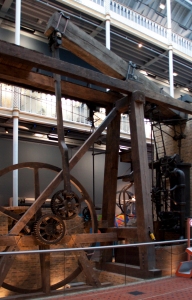
Boulton and Watt Steam Engine 1786, available at Wikimedia Commons (http://commons.wikimedia.org/wiki/File:Boulton_and_Watt_Steam_Engine_1786_(4537762717).jpg?uselang=en-gb)
The British Society for the History of Science (BSHS) is the biggest society in the British Isles dedicated to the promotion of scholarly research into the history of science, technology and medicine. It holds two conferences each year: its annual conference (during the summer) and a postgraduate conference in January. This year’s successful postgraduate conference was held by the Department of Science and Technology Studies (STS) at University College, London.
The conference had a range of panels including ‘Histories & Medicine’, ‘Science & Empire’, ‘Science & Public Discourses’ and ‘Philosophy of Science’. There was an excellent panel entitled ‘State Sponsorship vs. Private Reward: The role of the twentieth-century General Post Office in Warfare and Welfare’. This was comprised of presentations by Alice Haigh, Coreen McGuire, Sean McNally and Jacob Ward which looked at the Post Office’s research and development activities in twentieth-century Britain. In particular this panel gave a fascinating insight into the Post Office’s role in the development of hearing aids for the NHS and its role as an R&D centre for the British military during the First World War.
An extremely interesting paper was provided by Michael Guida entitled ‘Sonic therapy: birdsong on the radio during the Second World War’. This paper provided a fascinating look at not only an emerging technology but also an insight into the debate over the use of these natural sounds to alleviate the tensions brought to Britain during the Second World War.
The highlight of the conference, for me, was a paper given by Erin Beeston (Centre for the History of Science, Technology and Medicine, University of Manchester) entitled ‘A space to congregate, educate and exhibit: sites of knowledge production and consumption at the Camp Field, Manchester’. This paper looked at the social impacts of the construction of a train station at the site. The paper traced the encroachment of the sub-urban Manchester on this site that had many traditional functions including an open air market. The presentation sought to explain how municipal authorities sought to influence the activities happening in the area by the construction of an enclosed market space in which social interaction could be controlled.
The conference keynote was provided by Prof. Hasok Chang (Department of History and Philosophy of Science, Cambridge). This focused on the relevance of History of Science to both scientists and wider society.
The conference was well attended with a large number of speakers and was a great display of the vibrancy of the history of science, technology and medicine. As well as a large number of presentations from various UK universities, speakers were also present from across Europe including Finland, Spain and the Czech. Republic. As always with a BSHS event there was a welcoming and congenial atmosphere. A lively series of social events and excursions added to this collegiality. These included visits to the Science Museum (London) and the Wellcome Collection. The social events included a welcome reception at the Grant Museum of Zoology and a Bright Club Event. The Bright Club which originated at UCL is a stand-up comedy show where students and lecturers use their research as the bases of a comedy act. Despite reservations this turned out to be a highlight of the conference and a very enjoyable evening was had by all.
The call for papers for the society’s annual conference is now open. More information about the British Society for the History of Science and its annual and postgraduate conferences can be found on the society website http://www.bshs.org.uk/.
Adrian Kirwan, co-editor of Holinshed Revisited, is an Irish Research Council funded Ph.D. candidate at the Department of History, National University of Ireland, Maynooth. His research focuses on the interaction between society and technology, more about his research can be found here.
The Christmas Truce 1914
BY EMMA EDWARDS
On Wednesday 17 December 2014 Aldershot Town football club played host to the ‘game of truce’; a football match between representatives of the German and British armies in commemoration of the match purportedly played on the Western front on Christmas Day 1914. On this occasion the British Army managed a 1-0 win but, according to a report in The Times on the first day of January 1915, it had been the Germans who had emerged as the 3-2 victors, in the, for once, bloodless fixture in No Man’s Land. While the reality of this yuletide game has been disputed for some time, with it more likely to have taken the form of numerous casual kick-abouts, the reports and letters from serving soldiers confirm the organisation of informal truce arrangements on the Western Front on 25 December 1914. As per The Times, an officer in the Royal Field Artillery wrote that ‘it has been agreed between the soldiers on both sides that there should be no firing until midnight Christmas Day…….it was all arranged privately by one of our fellows going across! I think he was rather brave to be the first to do it.’ According to this officer, this détente led to personal exchanges and attempts at conversation with the ‘enemy’: ‘We all saluted, shook hands and exchanged cigarettes.’ A member of the London Rifle Brigade as well as a major in the Royal Army Medical Corps wrote of the playing of football, with the major claiming that ‘some of our people actually went into their trenches and stayed there for some time, being entertained by the enemy.’ The solider from the London Rifles was quite effusive in his admiration for the Germans in allowing the British regiment time and safety to afford a ‘decent’ burial to their dead on Christmas day:
They were really magnificent in the whole thing and jolly good sorts. I have now a very different opinion of the German. Both sides have started the firing, and are already enemies again. Strange it all seems doesn’t it?
Another major from the Leicestershire Regiment questioned the stereotype of the brutal ‘boches’ and even the necessity of combat, noting friendly conversations and carol singing and observing of the German soldiers: ‘They are jolly cheery fellows for the most part and it seems to silly under the circumstances to be fighting them.’ The Manchester Guardian, by far one of the least militarist publications, recorded the sentiments of a solider from the Front, writing on his experience of the truce: ‘I wouldn’t have missed the experience yesterday for the most gorgeous Christmas dinner in England.’
As many historians have pointed out, the Christmas Truce of 1914 was not universal with fighting continuing in many sections of the Front, with resulting casualties. Nor were such truces unique to Christmas. However these truces became rarer with the escalation of the conflict in the aftermath of the huge casualty tolls of Verdun, the Somme and Passchendale. There has been much commentary in the media on the style and tone of the commemoration of the First World War. Many were left uncomfortable at the sentiments expressed by the British Prime Minister David Cameron, whom, in the build-up to the centenary of the outbreak, expressed the hope for ‘a commemoration that, like the diamond jubilee celebrations this year, says something about who we are as a people. Remembrance must be the hallmark of our commemorations.’ While many historians are moving away from the perception of the First World War as a senseless undertaking, commemoration of the Christmas Truce strikes a resonance with those who value it as a moment of sanity in an insane conflict; a brief respite for humanity in the industrialised machine of war. How we, as individuals and as a society choose to commemorate and the divisive response to such orchestrated acts of remembrance, reveals much about the evolution of historiography and the organic relationship between the practice of history and the contemporary political climate.
FURTHER READING
Manchester Guardian, 31 Dec. 1914
The Guardian, 8 Oct. 2013
The Times, 1 Jan. 1915
Malcolm Brown and Shirley Seaton, Christmas truce: the Western Front December 1914 (London, 2011).
TV review: HBO’s John Adams
BY EMMA EDWARDS
Historical dramas often provoke exasperation among historians for what they perceive as gross inaccuracies and simplifications. Both Tudor historian David Starkey and Hilary Mantel, award winning author of the historical fiction series that offers a new perspective on the life of Thomas Cromwell, criticised Showtime’s The Tudors for straying too far from the chronology and realities of the court of Henry VIII. While most historians would concede that tv dramas and films need to deviate somewhat from the recorded timelines for dramatic effect, producers should not patronise or underestimate their audience. People who are driven to watch historical dramas tend to have a wider interest in and knowledge of history and appreciate narratives that are receptive to the complexities and nuances of the past. Good historical drama can provoke a deeper awareness that history is not black and white and can propel viewers to further reading to gain a more complete understanding of the subject matter. Excellent historical drama reminds viewers that history itself is often the result of competing interpretations, deviating enough from stale mainstream versions to explore the political and social forces that confer a mythic quality to certain events and actors.
HBO’s often overlooked 2008 miniseries John Adams achieves this level of sophistication with intelligent writing and superb acting with Paul Giamatti as the eponymous lawyer turned reluctant revolutionary and second president of the young United States and Laura Linney as his wife and chief counsel. The story is refreshingly told through the eyes of a figure central to its history but often overlooked by historians. Running through the series is an implicit awareness that it is not Adams that history has recorded as one of the chief architects of an independent American state and we watch as the son of a Massachusetts farmer has to come to the terms with the fact that, even in his own lifetime, he was being squeezed out of the holy trinity of the revolution by the higher profile figures of Washington, Jefferson and Franklin. The drama flies in the face of the hyberbole and excessive romanticism surrounding the War of Independence, depicting the revolution not as a sudden spark (which must be tempting in tv land) but as a slow burn of indignation against the intransigence of the metropole. The opening episode devotes much time to Adams’s successful defence of the soldiers who took part in the Boston massacre. A later scene finds Adams wondering at his unlikely transformation into ambassador to the Court of St. James’s on behalf of the newly formed ‘States United’; as he is presented to George III the viewer can appreciate his inner turmoil as he speaks to his former sovereign in the guise of a foreign diplomat.

John Trumbell’s famous depiction of the committee presenting the Declaration of Independence for signature
While the drama takes some liberties with the timeline, the dialogue is largely based on correspondence from the time-the many letters that passed between Adams and his wife Abigail form an important commentary on the course of the revolution and the foundation and beginnings of the new state. Historians have accused the writers of over-exaggerating a rift between Adams and his somewhat wayward son Charles but they cannot claim that the drama over-emphasises the friction between Adams and Thomas Jefferson. While their political disagreements and rivalry is depicted, so too is their understanding of each other and their attempts at reconciliation. This drama is also stripped of the glamour, gloss and sheen that is often an implausible feature of historical dramas. Instead makeup is minimal, clothes are soiled and teeth blacken and disappear with the passage of time.
What the drama does brilliantly is capture the process by which history transforms into myth. An aging Adams despairs of ‘modern history’ and the inaccuracies surrounding the revolution and its leaders, for the better and for the worse. One of the dramas most thought-provoking scenes involves a very elderly Adams being shown the artist Trumbell’s famous painting which depicts the committee’s presentation of the Declaration of Independence to the Continental Congress. Adams lambasts the painting as a falsehood; at no point, Adams asserts, during the summer of 1776 were all the celebrated figures presented in the painting, in the same room, at the same time-rather signatures were affixed whenever the delegates happened to be in Philadelphia. Thus John Adams is as much about the process of history as it is about chronicling the life of a farmer’s son, lawyer, revolutionary, diplomat, vice president, president and father of a president.
John Adams: Written by Kirk Ellis, based on the book by David McCullough and directed by Tom Hooper.
The old St. Canice’s Church, Finglas (Church of Ireland)
The old church of St. Canice’s, Finglas, is accessed through a small gateway off the Wellmount Road, located across the dual carriageway from Finglas village. Originally the residents of Finglas village would have gained accessed to the church via Church Street by crossing the Finglas bridge (both river and bridge are now gone). It was in existence by 1657 however it is obvious from the records that it was standing much earlier than this. This church according to tradition was built on the site of St Canice’s monastery. Saint Canice, born c. 516, having originally trained at Clonard, moved to this site from a monastic settlement located in Glasnevin. Robert Walsh gave a brief description of the church in his Fingal and its churches (Dublin, 1888):
[the] church is situated in the north-west corner of the burying-ground. No record exists of when it was built. It consists of a nave, 48 feet long, divided into two aisles, that to the north being 28 feet wide, while that to the south is 16 feet wide. At the east end of the north there is a chancel 34 feet long by 22 wide, separated by two large semi-circular arches, and each aisle had its own roof and gables. The west gable of the larger aisle was surmounted by a bell-turret, which has disappeared. The church is entered through a stone-roofed porch, opening into the north-west end of this aisle, which is 15 feet wide by 8 feet long. The nave is lighted by 2 west, 1 east and 1 north windows. The walls are very thick, and of plain rubble masonry. In the churchyard many celebrated people have been buried from ancient times.
In addition the grounds of the church contained the supposed cross of Nethercross (from where the Barony that Finglas parish is located in gets its name). According to legend this cross –that still stands in the church grounds- was buried by the parishioners upon the approach of Cromwellian forces and was to remain buried until rediscovered by Rev. Robert Walsh (father of the author of the above extract) early in the nineteenth century.
The history of the parish is well documented with the parish vestry records extant from 1657 to the present. Such records give an insight into the running and maintenance of the church and its grounds. However they are also a valuable resource for the study of the wider history of the parish. This is because the parish vestry was the smallest unit of government and thus the vestry records give much insight into how local government operated in Finglas, particularly prior to the passing of the poor laws in 1838.
As early as 1758 problems with damp appeared to be creating difficulties for the parishioners and by 1840 the church was in poor repair. Following consultation with an architect, the parish decided to seek funds from the Ecclesiastical Commissioners to build a new church. This new church, the current Church of Ireland, St Canice’s, was consecrated by the Archbishop of Dublin on the 20 April 1843. However the older church was to retain some usefulness to the parish. As the newer church did not contain a vestry the old church was to remain in use for vestry meetings until the 1870s as the parishioners felt that ‘improper it would be to permit the crowded & mixed meeting who now assemble at vestries to come into the body of the Church for common purposes & not only materially injure but desecrate in varies [sic] ways a sacred edifice.’
Further Reading
Robinson, Theo, The pure stream, the story of St Canice’s parish church Finglas (Kildare, 1993).
Walsh, Robert, Fingal and its churches (Dublin, 1888).
Adrian Kirwan, co-editor of Holinshed Revisited, is an Irish Research Council funded Ph.D. candidate at the Department of History, National University of Ireland, Maynooth. His research focuses on the interaction between society and technology, more about his research can be found here.
Conference Review: The Economic and Social History Society of Ireland (ESHI) 21-22 November 2014, St. Patricks College, Drumcondra, Dublin.
By David Gahan
The Economic and Social History Society of Ireland formed in 1970, promotes the study of economic and social history in Ireland. It publishes a peer reviewed academic journal, Economic and Social History, a pamphlet series and organises an annual conference.
Prof. James Raven gave the Connell lecture, ‘Publishing business in eighteenth-century Ireland’ which looked at the role of jobbing printers whose numbers saw an increase in Dublin from three in 1690 to fifty-three in 1787.
In keeping with the economic theme there was a very interesting session on ‘Policy and economic development in the twentieth and twenty first centuries’, in which three of the papers dealt with relatively contemporary issues. Niall Curran (UCD) gave a very informative paper on the Kenny Report and the question of development land in Ireland 1963-75. Measures taken by governments to stem price inflation of development land which resulted in the Kenny Report of 1974, which recommended limited price control for development land and why this report was not implemented, were outlined. Ciarán Casey (Oxford) provided a very interesting paper on what domestic organisations, the Central Bank and the ESRI published about the economy from 2000 to 2006. Both organisations were concerned about the over reliance of the economy on construction, but both underestimated what a ‘collapse’ would entail, suggesting a drop to between 40,000 and 50,000 housing units being built, while in reality it fell to 8,500. Despite some warnings, the Central Bank continued to argue that the financial system was inherently stable. The monetary policy of the Irish Central Bank under successive governors Joseph Brennan 1943-53, James J. McElligott 1953-60 and Maurice Moynihan 1961-8, was thoroughly examined by Dr. Ella Kavanagh (UCC). Rebecca Stuart of the Central Bank finished this session with a paper on ‘Stock returns in Ireland, the UK, and the US, 1864-1930.
An excellent paper by Dr. Daithí Ó Corrian (SPD), ‘loss and compensation in the aftermath of the 1916 Rising’ looked at an aspect of a period not often considered. He outlined the work of the Property Losses Committee 1916, which was established in June to access compensation claims. The British government admitted liability and paid out £1.8 m on claims ranging from destruction of buildings, loss of tools, jewellery and a consignment of butter. Brian Casey (UCD) delivered an informative paper on the struggles between the Fenians and the Catholic Church, centring around the candidature and election to Westminster of the Fenian John O’Connor Power, for Mayo in 1874. Declan O’Keeffe (Clongowes) gave a paper on Jesuit publications in Ireland, 1873-1912, detailing how they promoted the Jesuit mission.
There were two papers on the Mount St. Lawrence Cemetery Project in Limerick from Matthew Potter (Limerick Corporation) and Helene Bradley Davies (MIC).
Robyn Atcheson (QUB) gave a paper on charity in pre-Poor Law Belfast which looked at various charitable organisations from poorhouses to self-help schemes set up in the city before 1838. Prof. Thomas Callahan (Rider U. New Jersey) detailed the arrival of the famine Irish in New York; how many ended up in the Five Points area with its cheap accommodation and that by 1850 there were more Irish in New York than in Dublin. Also explored was some of the less well known history of their unhappy experiences in Liverpool while awaiting embarkation to the US. The conference finished on the Famine theme, Ciarán Reilly (Maynooth) gave a very informative paper about the often undocumented role of land agents attempts to improve agriculture prior to the famine. He outlined examples of this in Offaly, of improvements at Tullamore and the introduction of new cattle breeds such as Ayrshires, but also that many landlords were reluctant to make improvements. ‘Who ate Ireland’s food during the Famine?’ by Charles Read (Cambridge) was an interesting paper suggesting that the responsibility for high food prices during the famine came not from domestic demand, but from imported high prices, influenced by demand in France for corn.
Further reading:
The Economic and Social History of Ireland Society website, available at http://www.eshsi.org/
Bio:
My main research is in political and socio-economic developments in twentieth century Ireland and the wider world. I have a BA in History and English from 2012, from St. Patricks College, Drumcondra. I am currently a PhD student at the Department of History at NUI Maynooth. My thesis which is being supervised by Prof. Terence Dooley, examines the agitation surrounding the land annuities 1926-32. It aims to look at the economic effect of annuities on farmers and on political developments, particularly the positions adopted by the various political parties and how this impacted on the wider Irish political context.
Documentary review: One Million Dubliners
BY EMMA EDWARDS
Once in a while a historical documentary will achieve the status of instant classic-a documentary that provides as much of an insight into contemporary ideas about history and the present state of the nation as it does into the historical significance of past events. Aoife Kelleher’s One Million Dubliners explores the story and legacy of Dublin’s necropolis, Glasnevin/Prospect Cemetery. Glasnevin is not Ireland’s national cemetery but as the documentary reminds us, it occupies an important place at the heart of the national experience, a conscious memorial and marker to the process of state building and to the cultural invention of the Irish nation. The documentary recounted Glasnevin’s origins from the lobbying of its most famous occupant, Daniel O’Connell for a graveyard for those of every or no religion with the astonishingly detailed records of the 1.5 million people interred since 1832 arising from the Victorian mania for record keeping. It was the story of how the living interact with the dead; of people’s interpretation and remembrances of the lives of figures both documented and undocumented by history. We had a French woman whose interest in the life of Michael Collins was fanned into a long-term devotion with frequent pilgrimages made to his graveside. We were also fortunate to witness a young man’s moving homage to the cultural impact of Luke Kelly. Our more enlightened attitudes to once contentious aspects of Irish history were also discussed with the documented scenes of Glasnevin’s Armistice Day service. We were also exposed to the stories and rituals arising from the passing of ordinary Dubliners and the delicate line to tread in maintaining a heritage site that remains a functioning place of burial and cremation.
However the most stirring part of the documentary was the masterful way in which Glasnevin Trust maintains and shares the history and heritage of the graveyard with its many and varied visitors. The dedication and devotion of its staff shone through with some sage yet compassionate reflection on the place of death in the Irish psyche. Most poignantly of all, the documentary became a much deserved tribute to the man who did the most to cherish and share the story of graveyard with the Irish public-Glasnevin’s late resident historian and guide, Shane MacThomais. The passion, empathy and dedication MacThomais brought to the history of Glasnevin and to its tours was wonderfully captured-whether he was seamlessly breaking down the complexities of Irish history for foreign visitors or lapsing into his natural storyteller mode, making history come alive for a cohort of rapt schoolchildren. This, above all, is the lasting value and legacy of One Million Dubliners: as a fitting celebration of the role one Dubliner played in the preservation and democratisation of local and national heritage.
One Million Dubliners: An Underground Films production in association with RTÉ, the Broadcasting Authority of Ireland, Shoot for the Moon and Bord Scannán na hÉireann/The Irish Film Board
Transnationalism and history: some initial thoughts
The Irish History Online database (www.iho.ie), which provides a searchable bibliography of Irish history, lists seventeen works (books, chapters and articles) with the term ‘transnational’ in the title. Of these seventeen, sixteen have been published since 2003. This simple exercise reflects the increasing trend among historians of Ireland to adopt a transnational approach in their study of this country’s past. Ireland’s historic experience must not be viewed in a vacuum, as a stand-alone process, but, instead, as part a broader transnational context which influenced (and in turn was influenced by) developments on this island.
In recently considering this methodology, I had reason to return to a book that I first read two years ago. The book in question is Richard Bell’s We shall be no more: suicide and self-government in the newly United States, published by Harvard University Press in 2012. I had first become aware of this monograph while taking a postgraduate reading course at Maynooth University. While constituting a study of suicide in American society from the mid-eighteenth to the mid-nineteenth century, We shall be no more uses suicide as a vehicle with which to drive an analysis of a broad crisis of moral authority witnessed in the early United States. This is not merely a study of suicide, but rather an insight into wider social, cultural, ideological and political developments in the United States during these formative decades. In a nutshell, I found this to be a remarkable book by an exciting scholar, drawing on a decade of research to contribute new concepts and approaches to our understanding of eighteenth- and nineteenth-century American history.
Bell’s touching upon transnationalism in We shall be no more had relevance to my own research field of nineteenth-century Ireland. My PhD thesis, which examines begging and alms-giving in pre-Famine and Famine Ireland, touched on various aspects of transnational history and this is something I hope to engage with in more detail in coming years. During the course of my PhD research, a constant realisation has been that social questions in Ireland, such as the poor law debates, the multiplication of charitable societies and reforming ideas pertaining to the running of welfare and custodial institutions, cannot be viewed in a vacuum, as we sometimes tend to do in this country. Rather than being singular to Ireland, many of these ideas and processes were shaped in a transnational context. The influence of Britain and Europe was ever-present.
This theme is touched upon in Bell’s We shall be no more in his consideration of the emergence of humane societies in late-eighteenth-century America. Humane societies were charitable societies, founded and run largely by volunteers, which encouraged the investigation and implementation of pioneering life-saving techniques, particularly regarding drowning (either accidental or attempted suicides). The use of new methods in resuscitation and the use of modern life-saving equipment characterised these humane societies. It is no surprise that humane societies were largely found in coastal towns and cities, or urban centres with large rivers and canals. For instance, the first humane society was founded in Amsterdam in 1767. Bell is correct to place the development of this movement within the context of the wider humane society movement arising from Europe in this period, but I felt that he could have made more of this context. Similarly, in his analysis of the moral panic felt by American middle classes in the 1790s, more emphasis could also have been placed on the wave of panic felt throughout the transatlantic world at the events occurring in revolutionary France.
The transnational aspect of the humane society movement is truly fascinating and Bell is correct to use the term ‘movement’ to describe this network of charities. These were not individual, unconnected entities merely carrying out similar work at the same time as other bodies. Rather, these groups were formed under comparable conditions, by persons from comparable social backgrounds and with almost identical reasons for doing so. Yet, crucially, there was an exchange of information between sister societies from across Europe, Britain and the United States. Societies exchanged printed materials (such as rules and regulations, and annual reports), suggestions and advice based on precedent and experience. The term ‘movement’ can similarly be applied to the proliferation of fever hospitals, Strangers’ Friend Societies and mendicity societies throughout Ireland and Britain in the late-eighteenth and early-nineteenth centuries. Among other things, examples of co-operation and the exchange of mutual advice between societies from Ireland and Britain, as well as the clear sentiment that these bodies shared mutual interests, underpin the transnational element of these philanthropic movements.
Further reading
Richard Bell, We shall be no more: suicide and self-government in the newly United States (Cambridge, MS, and London, 2012).
For a bibliography of works on transnational history, see the website of Transnational Ireland (http://transnationalireland.com/).
Simon Macdonald, ‘Transnational history: a review of past and present scholarship’, available at UCL Centre for Transnational History website (http://www.ucl.ac.uk/cth/objectives/simon_macdonald_tns_review).
Tips for Conducting Archival Research Overseas
BY EMMA EDWARDS
Budding researchers and students embarking on history projects with an international dimension will at some point have to confront the challenge of research in archives abroad. I know for this historian that the first trip to a foreign archive was quite nerve-wrecking. What if the archive did not have the documents I was looking for? What if I was denied access to certain documents? A research trip abroad can incur considerable expense if self-funded and even if the researcher is supported by a grant or scholarship that researcher is often obliged to justify such financial support with an outline of what was achieved during the trip. The following tips may help reduce the anxiety induced by a research trip abroad to transform a daunting challenge into positive professional development.
1. Put careful consideration into selecting the most appropriate dates to visit the archive. Archives are usually opened 5-6 days a week but not all operate by traditional Monday-Friday hours. For example the National Archives in Kew opens Tuesday-Saturday. Opt to make the journey on the day on which the archive is closed to ensure that you do not waste any research time. Bear in mind that many archives close down to the public at certain times of the year – these times do not necessarily correspond to traditional holidays. Avoid travelling at peak times e.g. on dates on which a major international conference is held in the vicinity as reading space may be already booked out. Take special care to let the archive know that you intend to visit on certain dates and remind personnel that you are coming around a week in advance of a trip so that they know to expect a new reader.
2. Make sure that you have the correct documentation to obtain a reader’s ticket to the archive. For example, as well as a valid form of photo ID a letter from your thesis supervisor, proof of your affiliation with a university or research institute, or proof of address may be required. This will vary from archive to archive. For example, the British Library will not provide a valid reader’s card unless a valid proof of address (from an official source) is provided. The Archives of the French Ministry of Foreign Affairs will expect the submission of your passport for every visit (even following provision of a reader’s ticket) and will hold your passport for the duration of your visit. Ensure that you have fully read and complied with the documentation requirements of the archive concerned to avoid the frustration of a wasted or stalled excursion.
3. Do a comprehensive list of all the files you would like to peruse in advance of the trip.
Verify that these documents will be available when you need them (e.g. that they have not been removed from the collection for preservation work). Inquire as to whether you need special written permission from a senior archivist to access certain restricted files. Order these files in advance if you can, in order to make the most of your time. Some archives will not permit this action unless the researcher is already in possession of a reader’s ticket but it is still a good idea to register your intention to order certain documents with the archivists so that any restrictions may be flagged in advance of your trip.
4. Familiarise yourself with the regulations of the reading room in the archive. Standard rules regarding the prohibition of pens and bags apply to most archives but others may apply further restrictions e.g. having to submit to a security check.
5. Ask whether you can use a camera to take digital copies of files. This will make the most of valuable time by saving you the effort of transcribing and the expense of photocopying. Ensure that your camera has good battery life and take care to bring a charger or even a spare battery. A good camera is a better investment than a hand-held scanner as many archives prohibit the use of the latter devices.
6. Do not forget to bring adapters for your laptop and camera charger. This is easily overlooked, bringing what might be a fruitful day of research to a premature end.
7. Make an effort to forge good relations with the archivists and to keep them informed on the progress of your project. This is obviously essential for any researcher as archivists are encyclopaedias of knowledge on the collections and this knowledge is an additional asset for a researcher whose time in a foreign archive may be short. This historian has benefitted from keeping in contact with archivists abroad who have often brought pertinent files to my attention and who have even kindly acquiesced to posting copies of certain files to save me the expense of a trip.
Science Week for history enthusiasts
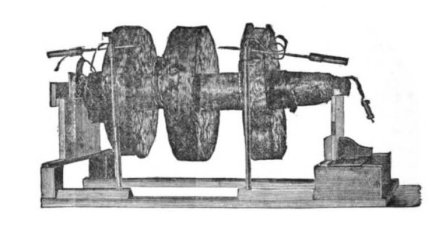
Nicholas Callan’s Induction Coil, available at Wiki Commons (http://commons.wikimedia.org/wiki/File:Callans_1863_induction_coil.jpg?uselang=en-gb) (7 Nov. 2014)
Science week provides a unique opportunity for those with an interest in the history of science and technology in Ireland to visit many institutions and locations that might not be accessible during the rest of the year. While there is much interest in current scientific endeavours, Ireland’s rich scientific and technology heritage is often forgotten.
A good starting point for anyone seeking a greater understanding of the history of science in Ireland is one of Ingenious Ireland’s walking tours (of Dublin). During science week Ingenious Ireland will be hosting walking tours entitled ‘Irish Ideas and Inventions that Changed the World’, see here (fees apply). The founder and lead guide of Ingenious Ireland, Mary Mulvhill, will also be giving a talk at Portlaoise Library on Irish scientist and inventors (12 Nov., 7.30 pm).
A number of Irish Science and Technology museums will be opening their doors for the week including the Hurdy Gurdy Museum of Vintage Radio, located in the Martello Tower overlooking Howth Harbour, Dublin. This museum concentrates on the history of telecommunications. Also opening its doors is the National Science Museum, at St. Patrick’s College, Maynooth (15 Nov., 2.00 pm to 3.00pm). This museum contains one of the largest collections of historical scientific instruments in Ireland. (More about the museum can be found here). The National Print Museum will have an open day entitled ‘Printfest’ (15 Nov., 12.00pm to 4.00pm). A particular highlight of the week will be an exhibition entitled ‘The Eighth Continent’ at the Edward Worth Library (Dr Steevens’ Hospital, Dublin 8, opposite Heuston Station, 13 Nov. 10.00 am to 4.00pm). This will centre on a display of early-modern texts on the moon and for anyone with an interest in early-modern science the ‘Worth’ is well worth a visit (please excuse the extremely bad pun!).
Lecturers during the week include: ‘The King Under the Carpark- Where Science Meets History’, by Dr Cas Kramer, University of Leicester which was part of the group that found the body of King Richard III in 2013 (Waterford IT, 10 Nov. 7.00pm); a lecture on the Irish Scientist John Desmond Bernal will be given by Professor Paul Barnes, Birkbeck, University of London (Nenagh Arts, Centre Banba Square, Nenagh, 11 Nov. 8.00pm); Professor Etienne Parizot, Professor of High Energy Astrophysics, Université Paris VII, France will give an presentation entitled ‘Cosmic Rays: A Century of Adventure and Mysteries!’
For those with an interest in Science Communication and the difficulties that can arise from its misrepresentation might be interested in a lecture by Professor Brian Hughes, entitled ‘Adventures in Science Communication’ (Maynooth University, 10 Nov. 7 pm, Theatre 2, Hume Building).
Hopefully, our readers will have a chance to attend at least one of these exhibitions. Events such as these provide a great opportunity to demonstrate the wealth of science and technology heritage that Ireland possesses. In addition, for those with an interest in more contemporary scientific discoveries there is plenty on offer during the week. More information can be found on the Science Week website here.
Adrian Kirwan, co-editor of Holinshed Revisited, is an Irish Research Council funded Ph.D. candidate at the Department of History, National University of Ireland, Maynooth. His research focuses on the interaction between society and technology, more about his research can be found here.
Museum of the Month: Johnstown Castle and the Irish Agricultural Museum, Wexford
BY EMMA EDWARDS
Suitably situated in the old farm buildings of Johnstown Castle estate, Wexford, the Irish Agricultural Museum offers a fascinating insight into the history of rural Ireland. Making superb use of the character and history of the estate, the permanent and temporary exhibitions provide an engaging and visceral social history. The museum has much to offer, with displays to excite the interest of anyone with a passion for local and rural social history as well as those with a grá for the history of technology. Visitors are exposed to the evolution of farm machinery and practises as well as to the everyday realities of rural living, with a particularly charming exhibition of an Irish country kitchen. A new exhibition in the museum traces the importance of farming to Dublin, reminding visitors of the expertise and practices that sprung from Dublin county which was once, long before it became the model of an industrial and then tertiary economy, as dependent upon farming as the rest of the country.
However the lasting impression that visitors will take from the museum is its sublime location. The often turbulent history of Johnstown Castle alone as well as the beauty of the lovingly maintained grounds provides more than enough diversion for anyone with a passion for neo-gothic architecture and Victorian landscaping. Gifted to the nation in 1945, the history of the estate dates back to the twelfth century with its association with the old Anglo-Norman Esmonde family. After changing hands several times during the Cromwellian period, the Grogan family eventually took possession of the house and sprawling grounds. Cornelius Grogan, the best remembered Grogan scion, was a member of the United Irishmen and a supposedly ‘reluctant rebel’ during the 1798 rebellion in Wexford. According to Grogan, he was forced to assume leadership of local United Irishmen but was not guilty of any overt act of treason. Despite this professed reluctance, Grogan was hanged and beheaded on Wexford bridge with his body flung ignominiously into the Slaney from where it was later recovered by his friends and buried in secret proximity to his ancestral estate.
Today’s castle was constructed between 1810 and 1855 and local historians believe that it was Kilkenny architect Daniel Robertson who designed this neo-gothic turreted edifice as well as the grounds and gardens. Two additional lakes, home to the estate’s many swans, were also dug into the grounds sheltered by an impressive assortment of redwood, cypress, fir, beech and ancient oaks. A walled garden, meandering walkways which lead you to the ruins of an older castle, shrubberies and wandering peacocks add to the character and timelessness of the demesne. One of the finest examples of a Victorian estate in Ireland.
In the winter months the museum opens from 9am-4.30pm on weekdays and from 11am-4pm on weekends and bank holidays. Run by Teagasc, the grounds and gardens are opened from 9am -4.30pm every day. See: http://www.irishagrimuseum.ie
Resources for Historians: Documents on Irish Foreign Policy (DIFP)
BY EMMA EDWARDS
Documents on Irish Foreign Policy (DIFP) is an eight-volume collaborative project undertaken by the Royal Irish Academy, the Department of Foreign Affairs and the National Archives of Ireland chronicling the evolution of Irish foreign policy, from 1919-45. The collection constitutes an important gathering of pivotal source documents from the collection of the Department of Foreign (previously External) Affairs in the National Archives. All volumes are available in hard copy form with digital versions of volumes I-VI available through the DIFP website. The latest volume (IX), covering Irish foreign relations from 1948-51, is set for publication in November 2014.
As with any collection of primary source documents, these volumes are not exhaustive but have been carefully selected by the editors and organised along thematic and geographic lines. This is quite similar to the Foreign Relations of the United States series. Therefore while the collection is an invaluable resource and reference tool for historians of Irish foreign policy and international relations, serious scholars should not rely solely on the collection but rather use it as a springboard for more focused mining of the DFA documents in the National Archives.
Great care has been taken to preserve the integrity of the documents and to ensure the transparency of the editorial process. An excellent editorial touch to the collection has been the addition of the marginal notes to the reproduced documents and the identification of the authors of these notes, where possible. Such notes are often quite telling and gleefully seized upon by historians of foreign policy looking to gauge the reaction of the home government to the observations and reports of the diplomatic corps and to international affairs in general. While spelling mistakes may have been corrected by the editors, all other additions and amendments have been tracked. Although the collection cannot be comprehensive, the editorial board of the project is composed of the pre-eminent scholars of Irish foreign policy-seasoned historians such as Professor Ronan Fanning, Dr. Michael Kennedy, Professor Dermot Keogh and Professor Eunan O’Halpin who select the documents for inclusion based on their perceived importance and significance.
Users can browse the online volumes by year or document number. The DIFP website also provides a key word search option. The advanced search setting is highly recommended along with Boolean methods (i.e. search for “Vatican”, not Vatican). Any historian interested in the DIFP collection or in Irish foreign relations in general should certainly make the effort to follow @DIFP_RIA on Twitter. Links to digital copies of illuminating DFA documents are posted as part of the project’s #docoftheday social media drive. For example followers can read the 1936 report of the Irish delegate to the League of Nations on Emperor Haile Selassie’s infamous speech to the League of Nations Assembly or the correspondence surrounding the appointment of Professor T.A. Smiddy as Ireland’s first Minister Plenipotentiary and Envoy Extraordinary to the United States (1924-9).
The efforts of the DIFP project to publicise and disseminate crucial documents on Irish foreign policy should serve as the inspiration and foundation for any budding historian of Irish foreign relations.
Useful website
http://www.nationalarchives.ie/
BIO:
Emma Edwards, co-editor of Holinshed Revisited, completed her PhD on international history (NUI Maynooth) in 2013. Her research is broadly concerned with the ethos and practise of the League of Nations and with the evolution from pre to post-war internationalism.
Review of the Irish Network for the History of Science, Technology and Medicine’s 2015 conference ‘Science in the City’
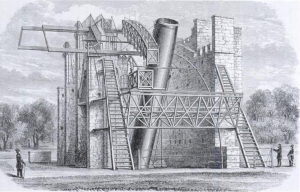
Earl of Rosse’s 72-inch (1.8-meter) telescope at Birr Castle, Ireland. Robert S. Ball: The Story of the Heavens, 1886, available at Wikimedia Commona (http://commons.wikimedia.org/wiki/File:Rosse_72_inch_telescope_Birr_Castle_Ireland_1886.png?uselang=en-gb) (14 Oct. 2014).
The 2015 conference for the Irish Network for the History of Science, Technology and Medicine was held on the 3 October in the Edward Worth Library, Dublin. The theme for this year’s conference was ‘Science in the city’. This produced a number of excellent papers. Dr Ida Milne (NUI Maynooth/QUB) provided us with an overview of the 1918 flu outbreak in Dublin and with the municipal authority’s attempts to deal with it. This was followed by an excellent paper from Dr Tomas Irish (TCD) which focused on the role that academics in Trinity College played in the First World War. This was primarily concerned with academics who attempted to use their scientific knowledge to further Britain’s war efforts. The paper highlighted the perception that the war could be an event where academic scientists could prove the worth of their discipline in comparison to the study of Classics that had been such a feature of university education up to this point.
The afternoon session produced a fine paper by Tanya O’Sullivan (QUB) based on her recently completed PH.D. thesis. This looked at different academics’ view of the ongoing debate about the origins of handedness in nineteenth-century Dublin. This session was finished by Mary Mulvihill of Ingenious Ireland (who runs historic tours of Dublin with science, technology and medicine themes). This presentation was not only highly entertaining but also highlighted the interest in the history of science, technology and medicine amongst the general public.
The day was finished with the foundation of the Irish Network for the History of Science, Technology and Medicine. This network will be a focal point for those interested in the study of science, technology and medicine. We shall aim to give our readers more information on the network and its activities in the coming months.
Adrian Kirwan, co-editor of Holinshed Revisited, is an Irish Research Council funded Ph.D. candidate at the Department of History, National University of Ireland, Maynooth. His research focuses on the interaction between society and technology, more about his research can be found here.
Werewolves in the woods – a 12th century account of strange happenings on the borders of Meath
By David Collins
Giraldus Cambrensis or Gerald of Wales, a prominent Cambro-Norman churchman and celebrated historian composed many works, two of which were concerned with Ireland. Gerald visited Ireland in 1183 and again in 1184 where he compiled the material he would use in both his Topographia Hibernica and Expugnatio Hibernica (‘Topography of Ireland’ 1187 and ‘Conquest of Ireland’ 1189).Better known to students of history, the Expugnatio is his account of the coming of the English (Gerald’s description) to Ireland. Not only is this work openly favourably to the Anglo-Norman belligerents but it also promotes the role played by Gerald’s relatives, a closely connected group of knights some of whom would found the politically powerful Geraldine dynasties of Kildare and Desmond. Gerald’s slightly earlier work, the Topographia, is concerned not only with the geography and of Ireland but also its ancient history, wildlife and various accounts of miracles. This work, as with the Expugnatio, is decidedly critical of the habits and behaviours of the Irish partly as a means of justifying the aforementioned conquest.
Gerald’s account first describes the various animals that can be found in Ireland and indeed those that are absent (all poisonous animals, not just snakes!). In this section he tells us that ‘Bede says that there are only two kinds of harmful beasts in Ireland, namely, wolves and foxes’ (the Venerable Bede 673 – 735). Gerald follows this by stating [single space here instead of double] ‘I would add the mouse as a third, and say that it is very harmful indeed’. In the second part of his Topographica which describes various miracles, Gerald returns to the subject of wolves. He explains that three years before John de Courcy, Lord of Ulster arrived in Ireland (1182) that a priest had been travelling from Ulster to Meath with a young companion. One night while camped in a wood a wolf approached their campfire and to the consternation of the priest spoke the following words:
‘Do not be afraid! Do not fear! Do not worry! There is nothing to fear!’
The understandably astounded priests first response was (surprise surprise) to pray to the holy trinity not to be harmed. The wolf then went on to explain that he was a native of Ossory and that as a result of an ancient curse by a St. Natalis every seven years a man and a women were exiled, not only from Ossory but also from their human form by transforming into wolves. The wolf continued that his companion was nearby gravely ill and in need of a priest to give her the last rites. The priest followed the wolf to a hollow tree where there lay a second wolf, crying and groaning with a human voice. The priest proceeded to give the last rites right up to the last communion. The she-wolf begged him to continue but the priest said he did not have the viaticum with him. At this point the first wolf reappeared carrying a small bag which contained the priest’s consecrated hosts. It seems that at this point as the priest was reluctant to continue, the wolf to ‘remove all doubt’ pulled all the skin off the she-wolf with his paw and revealed the shape of a woman within. The priest ‘more through terror than reason’ continued with the sacrament and wolf skin reformed over the woman’s body. The wolf then shared their campfire that night and the next day showed the priest the surest way through the woods before thanking him and promising to reward him when he regained his human form.
Gerald concludes his tale by telling us that two years after these events he himself was passing through Meath where the bishop was calling a synod to discuss the matter. The synod concluded that a report of the affair along with the priest’s confession should be sent to Rome for investigation (Gerald claims that this was at his suggestion). The report was duly dispatched along with all the seals of those Bishops and Abbots present at the synod.
It is worth pointing out that while Gerald is occasionally guilty of exaggeration he was never one to invent facts. He was always careful to stress that the more fantastical tales he recounts were not witnessed directly by him. Even the strangest episodes that might well at first glance seem to have been created to serve a specific agenda often, on closer examination, have their origins in early medieval Irish literature. While this strange tale of werewolves in Meath was evidently well known in ecclesiastical circles in 1184, we are fortunate that Gerald took the time to record it for posterity.
Further reading
Gerald of Wales, The history and Topography of Ireland, translated by John J. O’Meara, (London, 1982).
Giraldus Cambrensis, Expugnatio Hibernica, translated and edited by A. B. Scott and F. X. Martin, published by the Royal Irish Academy (Dublin, 1978).
Enlightened imperialism? The League of Nations Mandates Commission
BY EMMA EDWARDS
In the aftermath of the First World War, the League of Nations established a form of ‘enlightened imperialism’ whereby member states were authorised to administer former German and Ottoman imperial possessions. Article 22 of the League Covenant established ‘mandates’ over ‘those colonies and territories, which as a consequence of the late war have ceased to be under the sovereignty of the states which formerly governed them, and which are inhabited by peoples not yet able to stand by themselves under the strenuous conditions of the modern world’. The mandate system was not a threat to colonialism but rather served to legitimise it as a (perceived) necessity within the international landscape on the understanding that ‘the well being and development of peoples form a sacred trust of civilisation’.
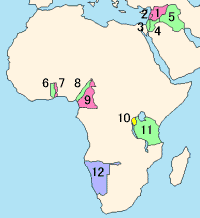
1. Syria, 2. Lebanon, 3. Palestine, 4.Transjordan, 5. Mesopotamia, 6.British Togoland, 7. French Togoland, 8. British Cameroons, 9.French Cameroun, 10. Ruanda-Urundi, 11. Tanganyika and 12.South West Africa
Britain, France and Belgium were granted mandates over German East Africa, Togo, Cameroon, South-West Africa, Palestine, Lebanon, Transjordan, Mesopotamia and Syria. However the great powers were not given free reign to annex the mandated territories into their own colonial administrations but rather undertook to comply with conditions set by the League. The Permanent Mandates Commission (PMC) met twice yearly in Geneva with its work supported by the League Secretariat. Member states were obliged to submit reports to the Commission to ensure that they complied with the strict terms of their respective mandates. The Commission was populated by distinguished personnel, mostly former colonial governors, appointed by the League Council. According to Zara Steiner not only could these appointees match colonial administrators in experience but the latter came to hold the PMC in high esteem and did not ignore any interrogation or criticism emanating from Geneva. While the PMC could report to the League Council it was devoid of any coercive function. As such it was powerless to confront states for any omission or distortion of information. Nor could its members conduct on-the-ground official inspections of the various mandated territories. As with the League Assembly, the PMC could only act as a moral force, holding the threat of a public rebuke over offending states.
The League of Nations has been cited by many historians as an important force in establishing norms of state behaviour. Michael Callahan argued that Britain and France did treat the mandates areas as distinct from the rest of their colonial territories. The PMC encouraged British and French measures to limit unrestrained land acquisitions by white settlers and to establish humane labour conditions for the native populations as well as initiatives for the improvement of public health. The mandated territories did not conform to the traditional economics of imperialism. The governor of the British mandate of Tanganyika exploited the international status of the region to ensure that the territory could buy cheaper American products over British merchandise. In 1933 British military officials even conceded that it was contrary to the mandate system to establish a naval base in Tanganyika or to expect that territory to contribute to the defence of neighbouring Kenya. However the mandated system did not prevent the white populations from acquiring the best land; nor were native inhabitants permitted to play a role in administration.
The League’s mandates system certainly did not hasten the transition to self-rule. The Unied Nations on the other hand became synonymous with the postcolonial era. The UN Trusteeship Council assumed the role of the PMC, overseeing the administration of the 11 former mandated territories of the League: by 1994 all of these territories had either obtained independence or combined with neighbouring independent states.
Further Reading
Michael D. Callahan, ‘“Mandates territories are not colonies”: Britain, France and Africa in the 1930s’ in R.M. Douglas, Michael D. Callahan, and Elizabeth Bishop (eds), Imperialism on trial (Lanham, 2006), pp 1-20.
Susan Pedersen, ‘Back to the League of Nations’ in The American Historical Review, cxii (2007), pp 1091-1117.
Zara Steiner, The lights that failed: European international history 1919-33 (Oxford, 2005).
Between a rough wooing and a love match: The Acts of Union 1707
BY EMMA EDWARDS
Two weeks ago, during the climactic build-up to the recent referendum, this historian found herself in Edinburgh confronted with the rich and very deliberate historical markers of a complicated political union. Edinburgh Castle, with a triumphant ‘Yes’ banner unfurled across the rock face from which the very walls of the bastion appear to be carved, had become, for some, a statement of Scottish separateness; the site of an almost impenetrable defence from a much more powerful neighbour. However for others it remained a reminder that Scotland had also played the part of protagonist and eager partner in the union of the two kingdoms. The official guide book reminds visitors that on the morning of 19 June 1566 one of the single most important events in ‘British’ history occurred in a small room in the royal apartments, with the birth, to Mary Queen of Scots, of the future James VI of Scotland and I of England. In 1617, as part of his golden jubilee celebrations, James made a (by-then) rare visit to Scotland for which the royal apartments had been lavishly refurbished and festooned with the symbols of his expanded kingship. On the window pediments of his birthplace, the Scottish thistle was joined by the English rose and the Irish harp to reflect his inheritance of the kingdoms of England and Ireland from his cousin Elizabeth I.
While the three kingdoms shared a common monarch, full legislative and political union for England and Scotland did not follow for another hundred years and not for another hundred years after this for the entire British Isles. James’s early attempts to win support for a proclamation uniting the two kingdoms won little favour in Westminster and so he was confined to setting symbolic foundations for a subsequent union by (from 1604 onwards) styling himself as ‘King of Great Britain’ and by approving the creation of a flag which combined the crosses of St. George and St. Andrew. Subsequent monarchs showed little interested in uniting the kingdoms (although an experiment in a combined parliament arose out of practicality in the Cromwellian period) until the aftermath of the Glorious Revolution (1688). The newly crowned King William III was eager to promote he common adherence to the Protestant religion and antipathy to the Catholic faith shared between the two parliaments. A political union might also prove a safeguard against the Jacobite cause (those who supported the exiled Catholic monarch William’s father- in-law and uncle James II and his heirs). The Scottish Convention Parliament in Edinburgh appointed commissioners to negotiate a union with the English parliament but the apparent indifference and inflexibility of that body stoked anti-English sentiment. The unpredictable Scottish parliament was also increasingly frustrated with unfavourable trade terms and the failure of the English parliament to compensate Scottish investors in the Darien scheme, an unsuccessful venture to establish a new colony in Panama. William and his co-monarch Mary were childless and the death of their nephew, William of Gloucester, the son of their heir apparent Princess Anne, raised the possibility of the Scottish crown passing not to their named Protestant German successor, the Electress of Hanover and her issue, but back to the native Scottish dynasty of exiled Stuarts. Two new bills emerged from Westminster in late 1704 offering the Scots a single trade area and full political union but threatening a ban on Scottish imports unless the Edinburgh parliament accepted the Hanoverian succession. Spurred by these developments, agreement for union was secured between representatives of both the English and Scottish parliaments in just three days in April 1706. To summarise the resulting acts, Scotland gained full access to English domestic and colonial markets, the House of Hanover was poised inherit the throne of a united kingdom from Queen Anne and Scottish MPs would sit in the Westminster parliament. The Acts were finally ratified in spring 1707. Assent to the Acts in Edinburgh was not a straightforward affair and parliament did not quietly vote itself out of existence but rather debated against a backdrop of public disorder and Kirk disapproval. As with the Acts of Union in Ireland a hundred years later there were accusations of parliamentary bribery. Indeed the debate for union proved more inflammatory than the debate to undo it 300 hundred years later.
Further reading
For a full text of the Scottish Union with England Act 1707: (http://www.legislation.gov.uk/aosp/1707/7/contents)
Steven Ellis & Sarah Barber (ed.), Conquest & union: fashioning a British state 1485-1725
(London, 1995)
Hugh Kearney, The British isles: a history of four nations (Cambridge, 1989).
David L. Smith, A history of the modern British isles 1603-1707: the double crown (Oxford, 1998
Book review: Roland Wenzlhuemer, Connecting the Nineteenth-Century World: The Telegraph and Globalization (Cambridge, 2013).
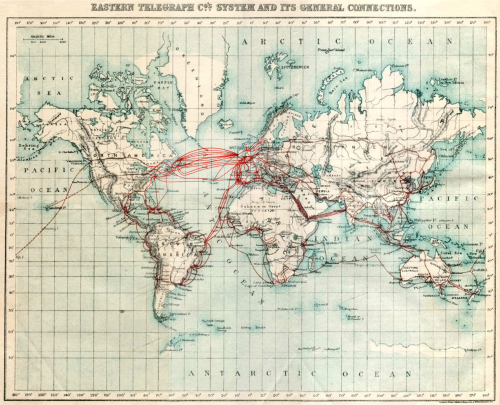
The Eastern Telegraph Co.: System and its general connections. Chart of submarine telegraph cable routes, showing the global reach of telecommunications at the beginning of the 20th century (A.B.C. Telegraphic Code 5th Edition, 1901), available via Wikicommons (click here).
The first thing that is obvious on reading this book is the author’s training as a social scientist. Much of the introductory and first chapter of the book is taken up with the social theory of technology. While this is an essential task for a history of technology study, in places the author’s use of detailed explanation and examples in striving for clarity can be excessive and detract from the empirical and narrative flow of the book. This makes the book an excellent starting point for students seeking to understand the sub-discipline that is the history of technology, as well as providing an excellent source of further readings. But it does make reading certain sections difficult and would deter the average readership without a strong interest in the history of communications.
The central aim of Wendzlhuemer’s book is to examine the role that the telegraph played in the process of globalisation during the nineteenth and early twentieth century. The book begins with the now near-obligatory comparison between the telegraph and the internet. This section concludes that there were similarities and differences between both technologies, in particular the ability of both technologies to ‘dematerialise’ information, i.e. physically separating information from a physical carrier. The book argues that to understand the development and application of these technologies we must look beyond the socio-, or technological-determinist understanding of technological development to what has been termed a ‘post-humanist’ approach. Thus, while technological systems are socially ‘shaped’, the technology has agency and impacts on its use. Bearing this in mind the book aims to understand how the forces of globalisation ‘shaped’ the global telegraph network and in turn how the availability of this network was utilised by those involved in the formation of a global economy.
The book is very successful in tracing how the development of global communication impacted upon temporal distances; that is the time it took to communicate between different regions of the world. The author through detailed research and analysis, using social network theory, is able to demonstrate that important financial and mercantile centres such as London developed significant links to regions like the east coast of the United States and India and this allowed rapid communication. However, in contrast, as these regions were becoming temporally closer other parts of the globe, due to poor telegraphic connectivity, were bypassed. In chapter six the book traces the development of international telegraphy and the author attempts to correlate the development of telegraphic connectivity with increases in trade, however while he maintains that this was the case in some regions it did not happen in others. The author, aware of the limitations of reliance upon telegraphic and trade statistics alone, is quick to point out that a study of the wider economic and structural factors behind these is needed to integrate the benefits of telegraphic connectivity within wider commercial interests.
As well as a global study of telegraphic development the author dedicates a chapter to the development of the telegraph in Britain and another to India. Again the use of social network theory allows an analysis of the use of this technology.
While the product of a substantial amount of work which provides a considerable amount of data of use to historians of the telecommunications this book at times presents this information without enough contextualisation. It is here perhaps that the book is too ambitious and by concentrating purely on international telegraphy could have allowed itself room to explore the wider factors influencing telegraphic development and its impact on globalisation in more detail.
In conclusion, for anyone researching globalisation, telegraphy and international trade in the nineteenth and early twentieth centuries this is a must read, but the density of statistics would deter the average reader.
Adrian Kirwan, co-editor of Holinshed Revisited, is an Irish Research Council funded Ph.D. candidate at the Department of History, National University of Ireland, Maynooth. His research focuses on the interaction between society and technology, more about his research can be found here.
The Scullabogue Memorial : difficult to find, difficult to fathom
On a recent trip to New Ross in County Wexford, I took a diversion through Old Ross where I observed a signpost pointing towards the ‘Scullabogue Memorial’. This was, as far as I could see, the only signpost on any public road to an especially significant and poignant memorial. Yet, after two hours of driving around the rural hinterland of New Ross, my wife and I still could not find the memorial and only upon searching Google using an iPhone did we discover that the memorial is located in the picturesque graveyard of St Mary’s Church of Ireland church in Old Ross. (Frustratingly, this was located merely a stone’s throw from the ‘Scullabogue Memorial’ signpost which we drove past numerous times on this search!) In a county covered with numerous monuments pertaining to the 1798 United Irishmen Rebellion, the poor signage to the Scullabogue Memorial was striking. A read through the memoir of UCC Professor Emeritus Tom Dunne, Rebellions: memoir, memory and 1798 (2004; new ed. 2010), provides an insight into this relatively hidden memorial.
Firstly, a quick note is necessary on the Scullabogue Massacre, which occurred on the same day as the Battle of New Ross. On 5 June 1798 in the townland of Scullabogue, which lies just six miles from New Ross, a barn which was used by rebels to detain men, woman and children, mostly local Protestants who were considered loyalists, was set on fire, killing all those inside. In his account of the massacre, its wider context and its aftermath, Tom Dunne provides a listing of the names, residence, sex, occupation and religious affiliation of 126 known victims. 116 of the 126 were identified as Protestants, and of the men who were killed, they were typically tenant farmers, servants, labourers and artisans. Dunne suggests that traditional sectarianism, which became acutely heightened at that time, combined with local agrarian grievances to influence those who carried out the massacre. Many of the victims were believed to have been buried in a mass grave in the churchyard of St Mary’s, where the memorial now stands.
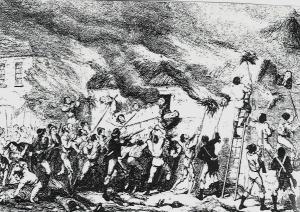
Caption: George Cruikshank’s infamous and sensationalised portrayal of the Scullabogue Massacre.
Dunne’s memoir paints a critique of the manner in which the bicentenary was marked in his native County Wexford, where, he argues, contemporary political agendas resulted in the promotion of particular historical interpretations of the rebellion. It is in this light that Dunne examines the decision to erect a memorial to the Scullabogue Massacre during the bicentenary commemorations in 1998.
The inscription on the memorial reads:
‘IN MEMORIAM.
In this place the people of Wexford
remember the victims of Scullabogue Barn
interred here and at Templeshelin,
used to detain some one hundred
men, women and children.
The barn was set on fire on 5 June 1798,
the day of the Battle of Ross.
The remorse of the United Irish
at this outrage, a tragic departure
from their ideals, is shared
by the people of Ireland.
IN IOTLAINN DÉ GO DTUGTAR SINN.’
The ‘men, women and children’ were, in an earlier version of the text, referred to as ‘prisoners’ but this wording was subsequently dropped. According to Dunne, the inscription suggests that the real trauma of the Scullabogue Massacre was experienced by the United Irishmen and not those persons killed. The emphasis is on the ‘remorse’ and ‘ideals’ of the United Irishmen and not the suffering of the victims.
The Scullabogue Massacre sits uneasily within the nationalist version of Irish history. In a rebellion supposedly driven by the ideals of uniting Catholic, Protestant and Dissenter, and which played a large role in shaping modern Irish nationalism and republicanism, the Scullabogue Memorial – ‘this modest stone, hidden away in a quiet corner of the little Church of Ireland churchyard’, as Dunne writes – serves as an uncomfortable, and regrettably lonely, reminder of this tragic and ugly event. The failure to satisfactorily commemorate the killing of more than 100 men, women and children in a massacre in which sectarian hatred played a part says as much about modern attitudes as it does about events more than two centuries ago. As we progress through the Decade of Commemorations, the case of the Scullabogue Memorial reminds us to be cautious in how we mark significant events in Irish history which are open to contentious and varied interpretations, and the influence of modern agendas.
Further reading:
Tom Dunne, Rebellions: memoir, memory and 1798 (2004; new ed. Dublin, 2010): this book contains Dunne’s analysis of the massacre as well as an outline of his subsequent debate with local historians as to the manner in which the massacre has been remembered.
Daniel Gahan, ‘The Scullabogue Massacre, 1798’ in History Ireland, iv, no. 3 (Autumn 1996), pp 27-31 (http://www.historyireland.com/18th-19th-century-history/the-scullabogue-massacre-1798/).
Daniel Gahan, ‘New Ross, Scullabogue and the 1798 Rebellion in south-western Wexford’ in The Past: the Organ of the Uí Cinsealaigh Historical Society, no. 21 (1998), pp 3-33.

